Creality Halot One Plus Review: Worth Buying?

With the Halot One Plus resin printer, Creality is trying to fill in the space between small and medium format resin printers. This means that the build volume should be enough for people who are looking for a bit more space without needing to increase the space needed for the printer.
Let’s see how the Creality Halot One Plus and if it’s worth buying.
Creality Halot One Plus Shipping and Packaging
As with most resin printers, the Creality Halot One Plus comes in a cardboard box with a lot of foam protection on all sides. This time, I remembered to open up the box from the bottom, which made the unboxing a bit easier.
The printer is well protected, and there’s a low chance of it arriving damaged.
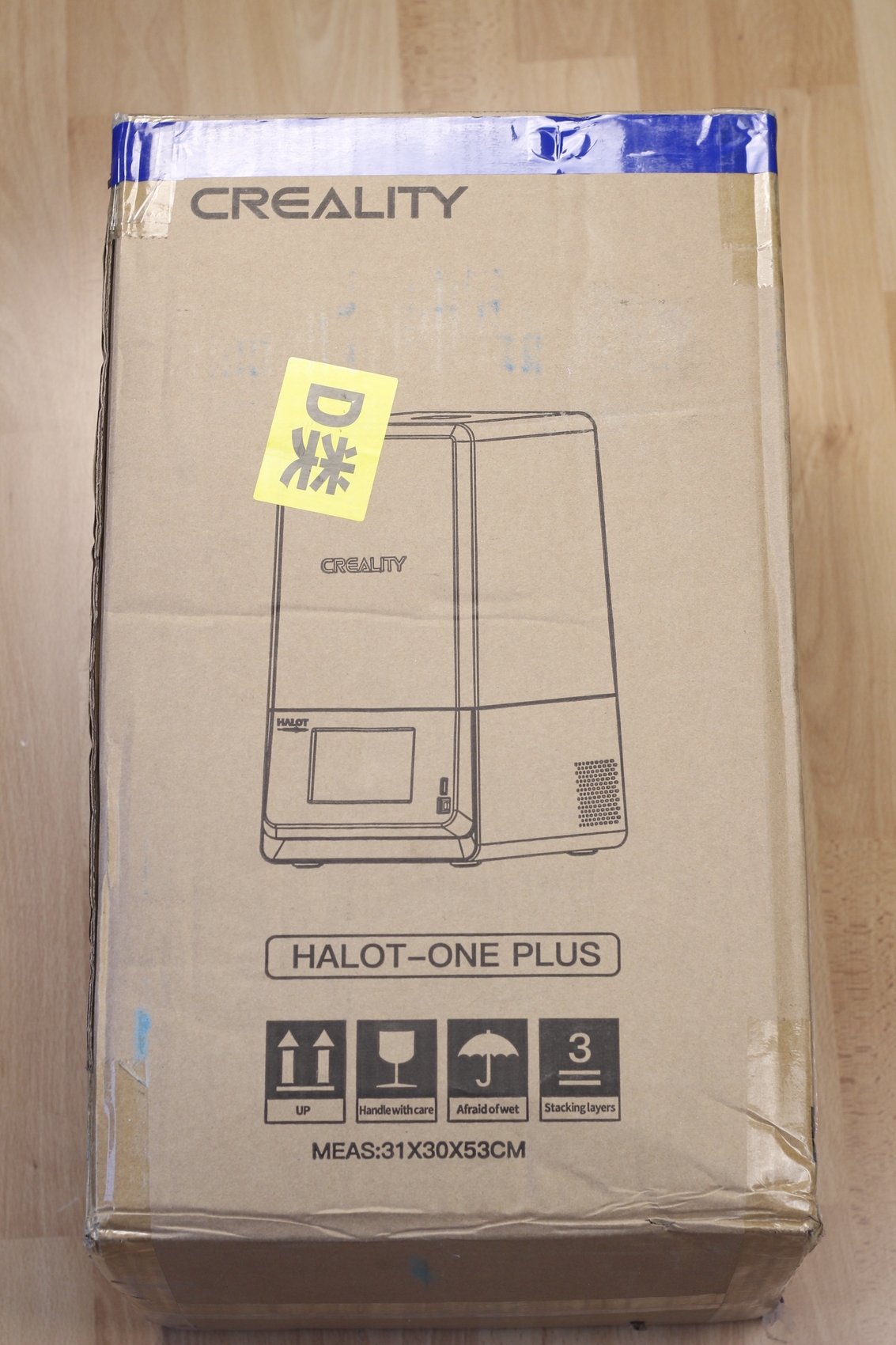


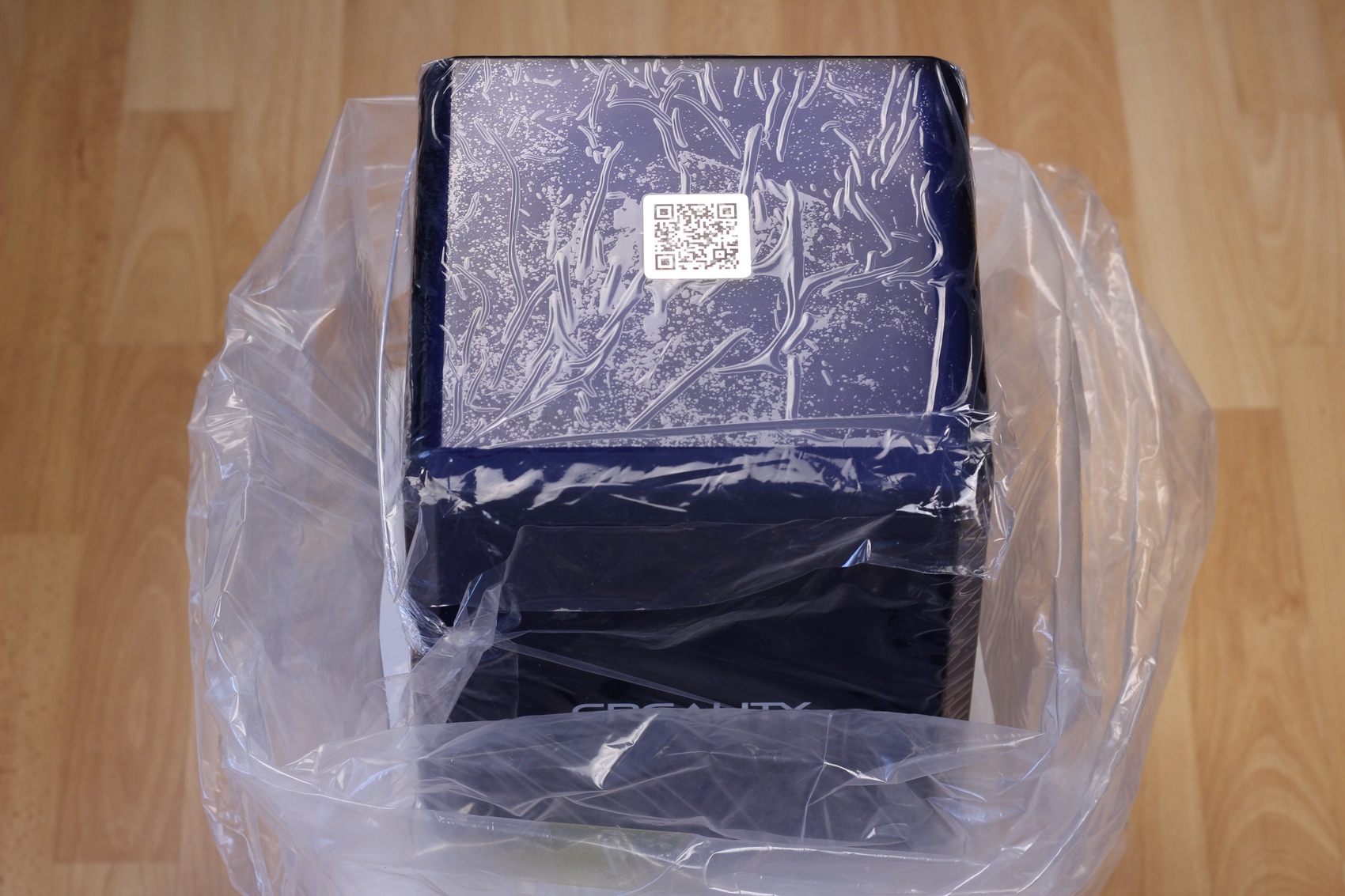
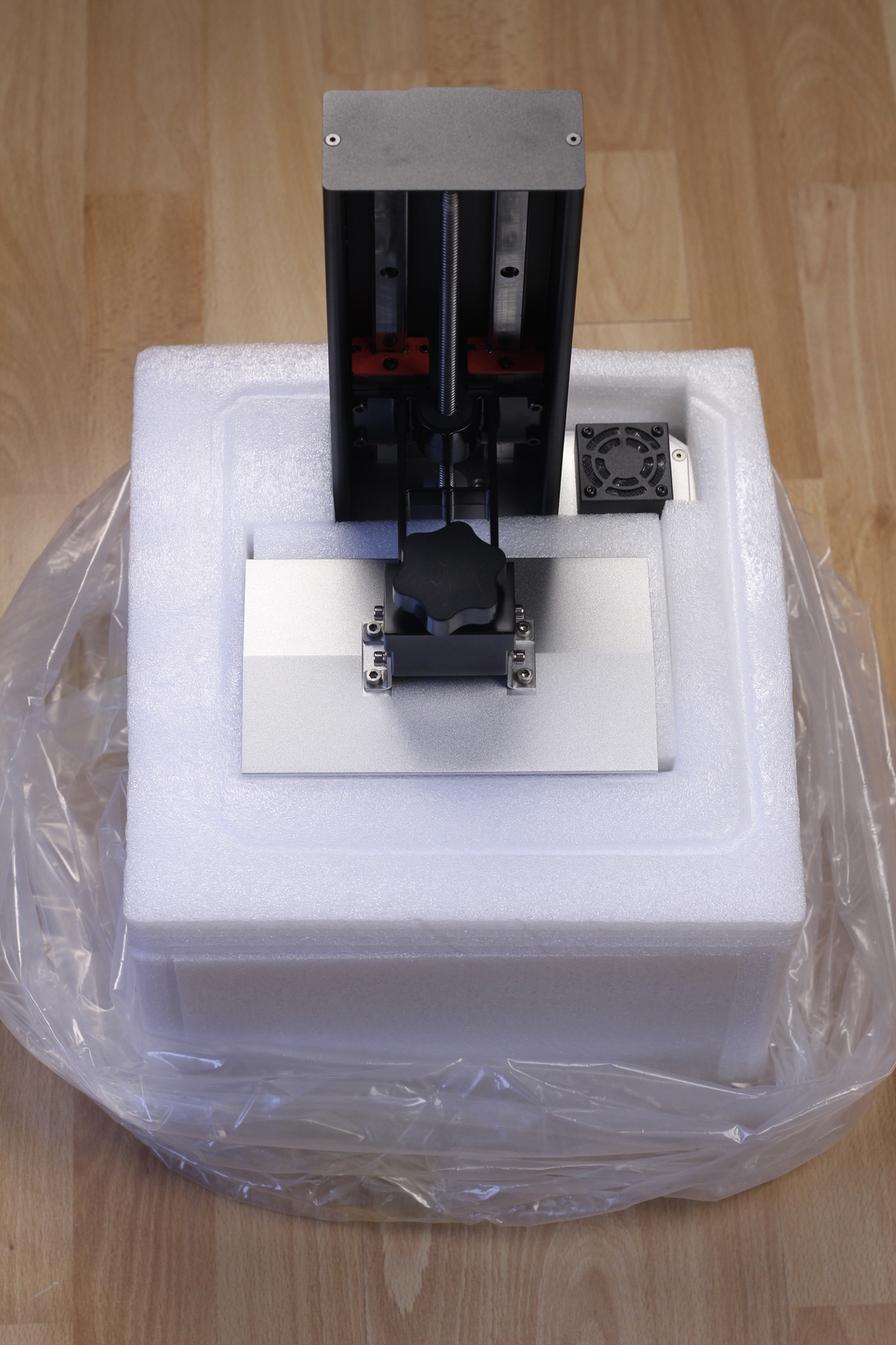
Besides the regular filters, spatula, and USB drive, I was happy to find a spare FEP sheet which is really nice to see. A spare FEP sheet is one of the most useful items you can get in the package because it’s a consumable and can be harder to find when a new printer is launched on the market.
Creality Halot One Plus Design
As you can see, the Creality Halot One Plus looks a bit different compared to other resin printers and that’s because of the dark blue cover. The color is quite dark, and you can barely see inside the printer.
For some reason, the Halot One Plus is also one of the dustiest printers out of the box I have reviewed to date. One of the reasons might be the color of the top cover which makes dust to be seen more easily.
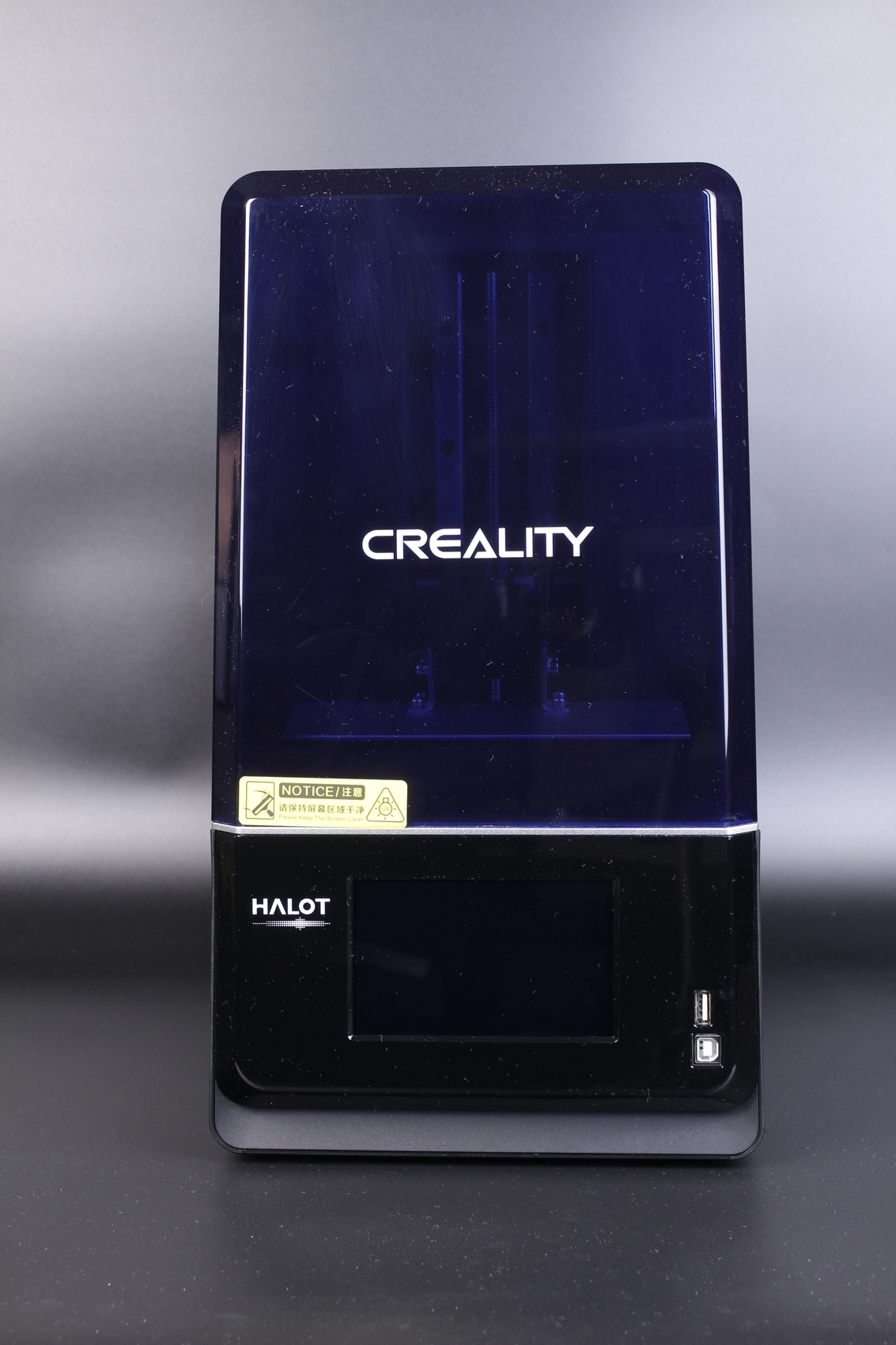

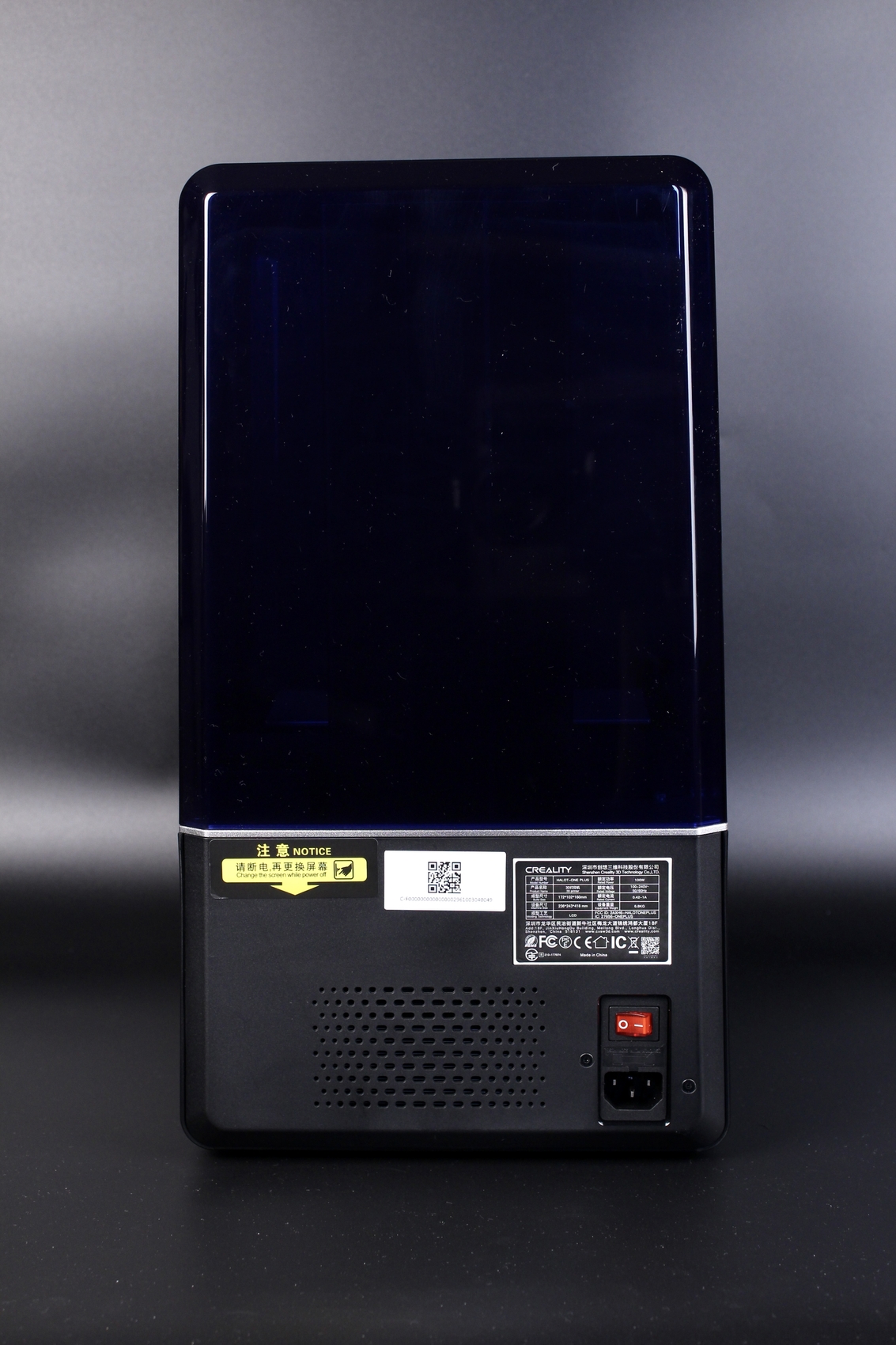
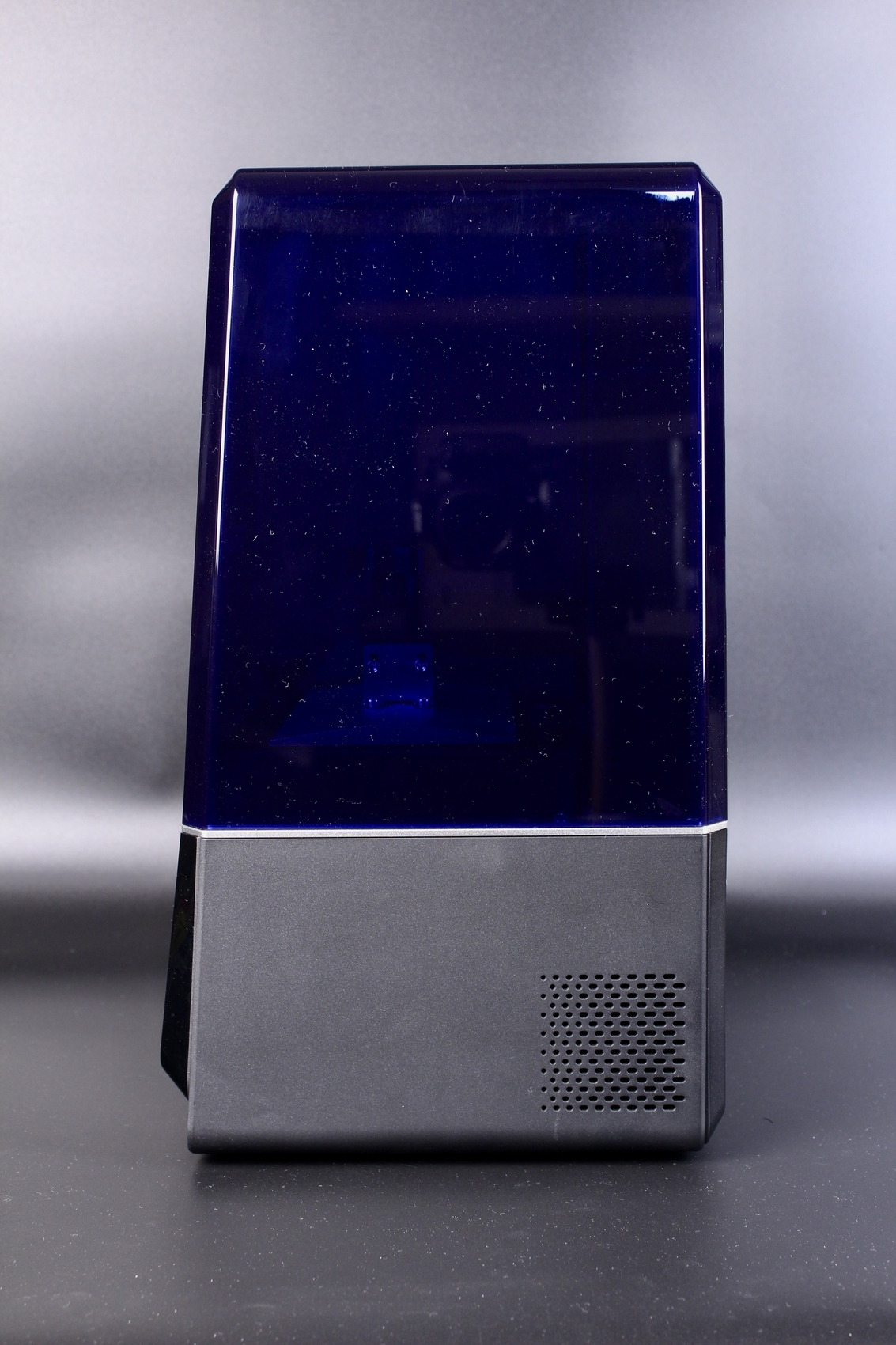
The front side of the printer around the touchscreen is made from shiny piano black plastic, and I don’t like it at all. I mean, sure, it looks nice when you unbox the printer. But it’s a fingerprint, dust, and scratch magnet which is super hard to keep in good shape. I wouldn’t have minded if the front would be made from the same plastic as the side, but this is a subjective opinion and you might like the design.
What I like is the front USB connectors, with a position that makes them easy to reach and use.
Creality Halot One Plus Specs
| Product Model | HALOT-ONE PLUS |
| Build Volume | 172*702*760mm |
| Screen Size | 7.9 inches |
| Screen Resolution | 4320*2560 (4K) |
| XY-axis Resolution | 0.04mm |
| Print Speed | 1-4/s layer |
| Layer Height | 0.01-0.2 mm |
| Touch Screen | 5-inch HD Full-view, Multitouch Screen |
| Working Principle | Integral Light Source |
| Wavelength | 405 nm |
| Rated Power | 100W |
| Machine Size | 236*243*418 mm |
| Package Size | 370*300*530 mm |
| Net Weight | 6.8 kg |
| Gross Weight | 8.6 kg |
| Slicing Software | HALOT BOX, LycheeSlicer, CHITUBOX |
| Data Transmission Method | USB disk, Creality Cloud, HALOT BOX WiFi |
| Supported Language | English, French, German, Spanish, Portuguese, Japanese, Korean, Turkish, Italian, Russian, Dutch, Polish, Simplified Chinese, Traditional Chinese |
7.9-inch 4K Mono LCD
As I was saying in the beginning, Creality is entering the small-to-mid-sized resin printers and this is made possible by the 7.9-inch 4K monochrome LCD. As with most recent resin printers, this will last for about 2000 hours of use.

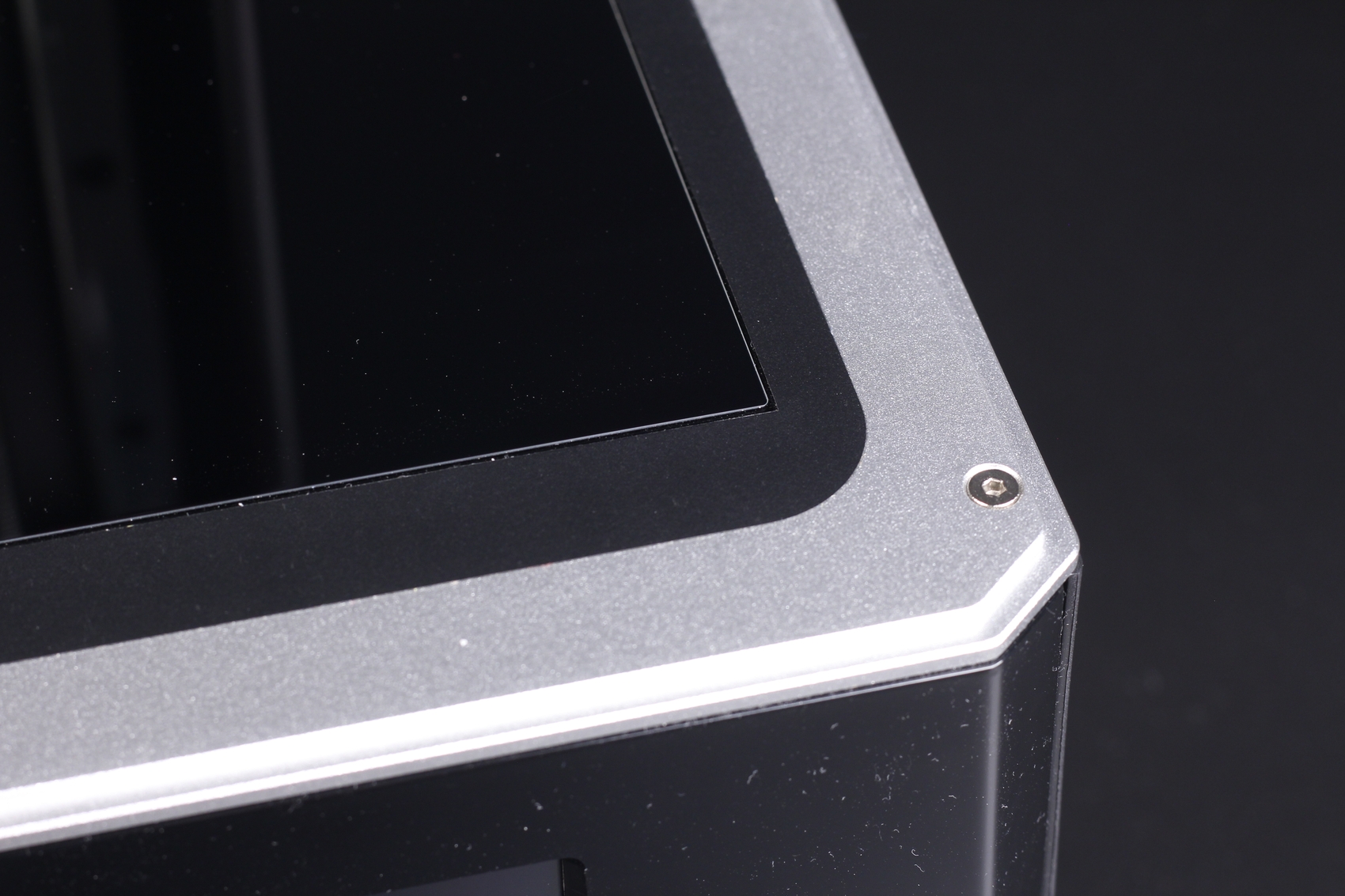
New resin printers come with screen protectors to save our machine in case of an FEP leak and the Halot One Plus also has one installed right from the factory. Hopefully, we won’t need to remove this anytime soon.
Self-developed Integral Light Source
An interesting feature is the lighting method used by Creality. Instead of using an array of LEDs like other manufacturers, the Creality Halot One Plus has a smaller size UV LED light and a mirror that bounces the light towards the screen just like with the Halot One Sky.
In theory, this works better because the light will be more uniform. And that’s true, but the LED light is harder to cool this way, meaning that you need to have a fan constantly running to keep it cool.
Dual linear rails for Z-axis
The Creality Halot One Plus has dual linear rails for the Z-axis. While I like this, I think it’s a bit overkill considering the size of the machine. The aluminum piece holding the rails is thinner and lighter compared to what I’ve seen on other machines and I think that a thicker extrusion with a single linear rail might have done the same job.
Either way, the Z-axis is plenty stiff so there’s no problem here. It makes the printer more expensive artificially in my opinion, but it is what it is.
Another interesting decision for the Creality Halot One Plus is to have the optical endstop at the top of the machine. I am not sure if this decision brings any actual accuracy improvements, but leveling time is increased because of this.
When you want to level the machine, you need to start the homing process, wait for the build plate to reach the Z endstop, then wait for it to return to the base of the machine. Sure, you don’t do this often so it’s not a huge issue, but I really don’t understand this design decision. Just to be different?
Activated Carbon Filter
On the top side of the printer, there’s an activated charcoal filter which should eliminate the resin smell. Unfortunately, this filter does absolutely nothing, and because of how it’s designed, the resin smell is pulled out from the enclosure and outside the printer.
Honestly, I haven’t tried any Creality machine which comes with an actually usable filter, so don’t take this “feature” as a selling point for the machine. If you actually want a system that works, the Anycubic portable filters are pretty cheap and I was impressed by their performance.
Aluminum vat with resin capacity markings
I really like the vat which is included with the Halot One Plus. It’s made from aluminum, it’s big but also light and the FEP sheet should be easy to replace. I also love the markings on the side of the vat and the pouring corners which make emptying the vat a bit easier.

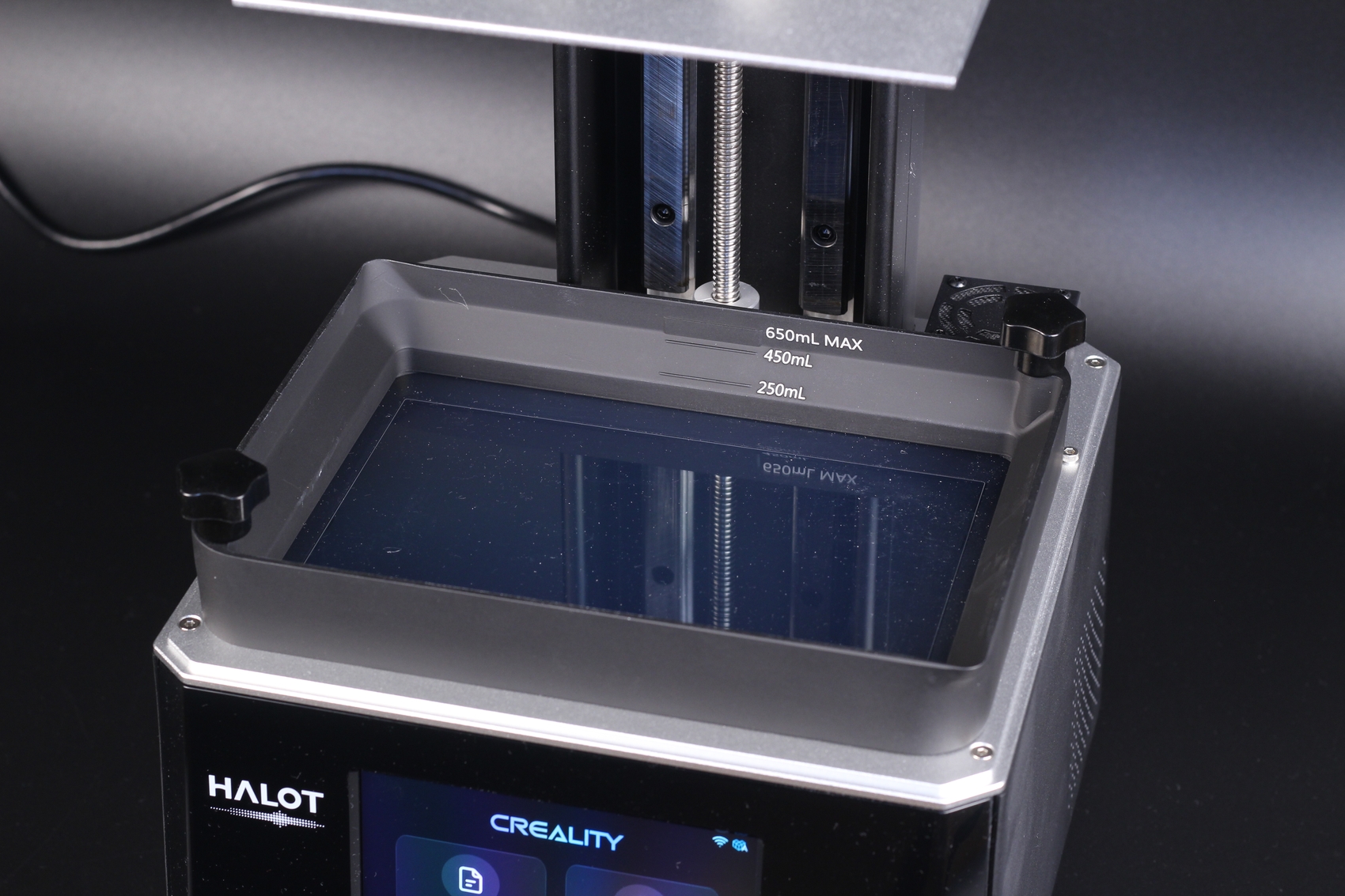
The corner thumb screws are installed in the bottom left and top right corners of the vat. When you remove it, the screws remain attached to the vat so you don’t have to worry about misplacing them or forgetting to install them. Yeah. that happened to me in the past.
The build plate is quite generic and it doesn’t have any kind of special features. It has a slanted top to help the resin flow away from it, but some resin still pools on the top where the screws are located which can be quite annoying.
The bottom side of the print surface has a sandblasted finish and prints stuck to it without any issues.
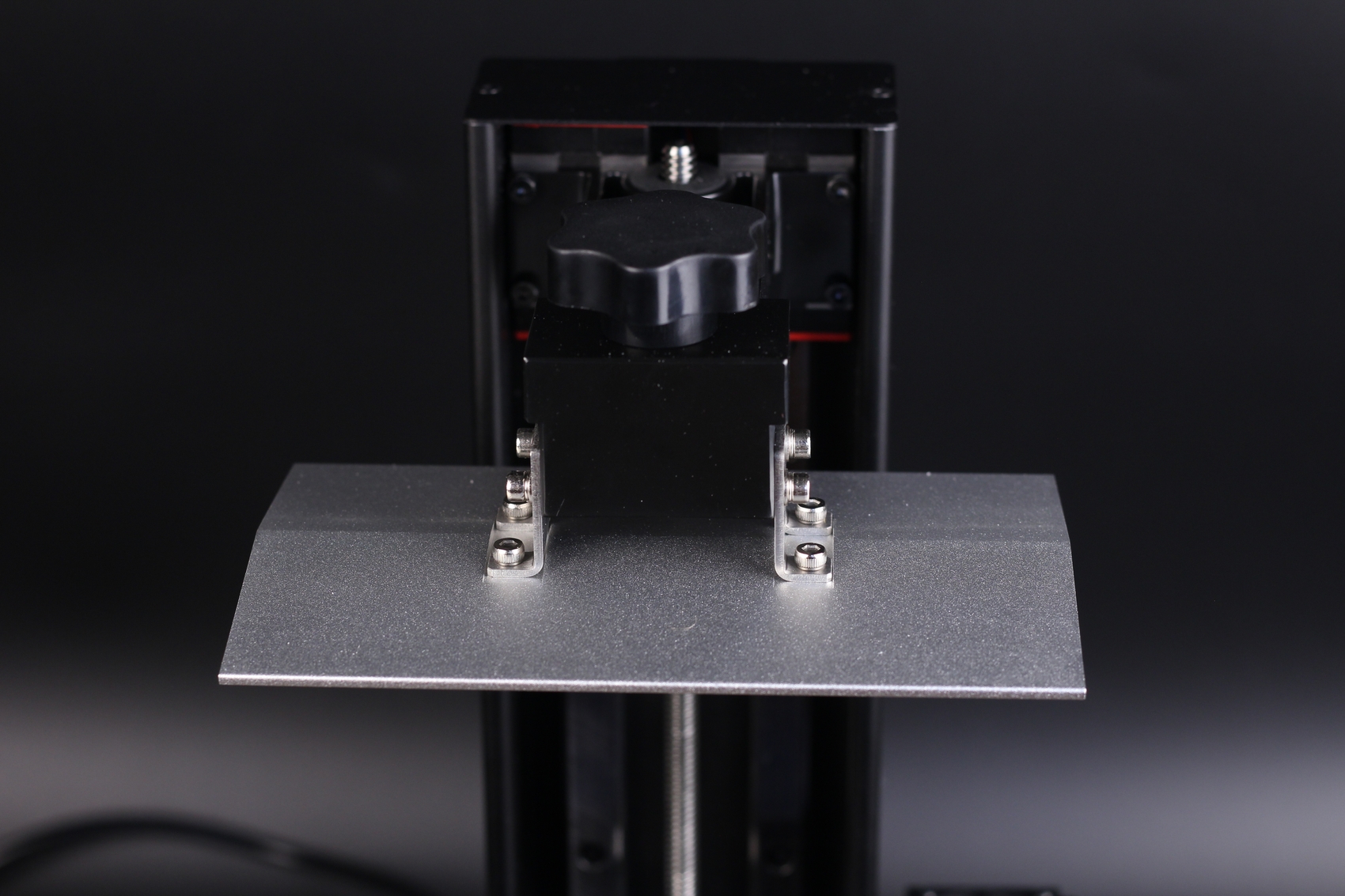
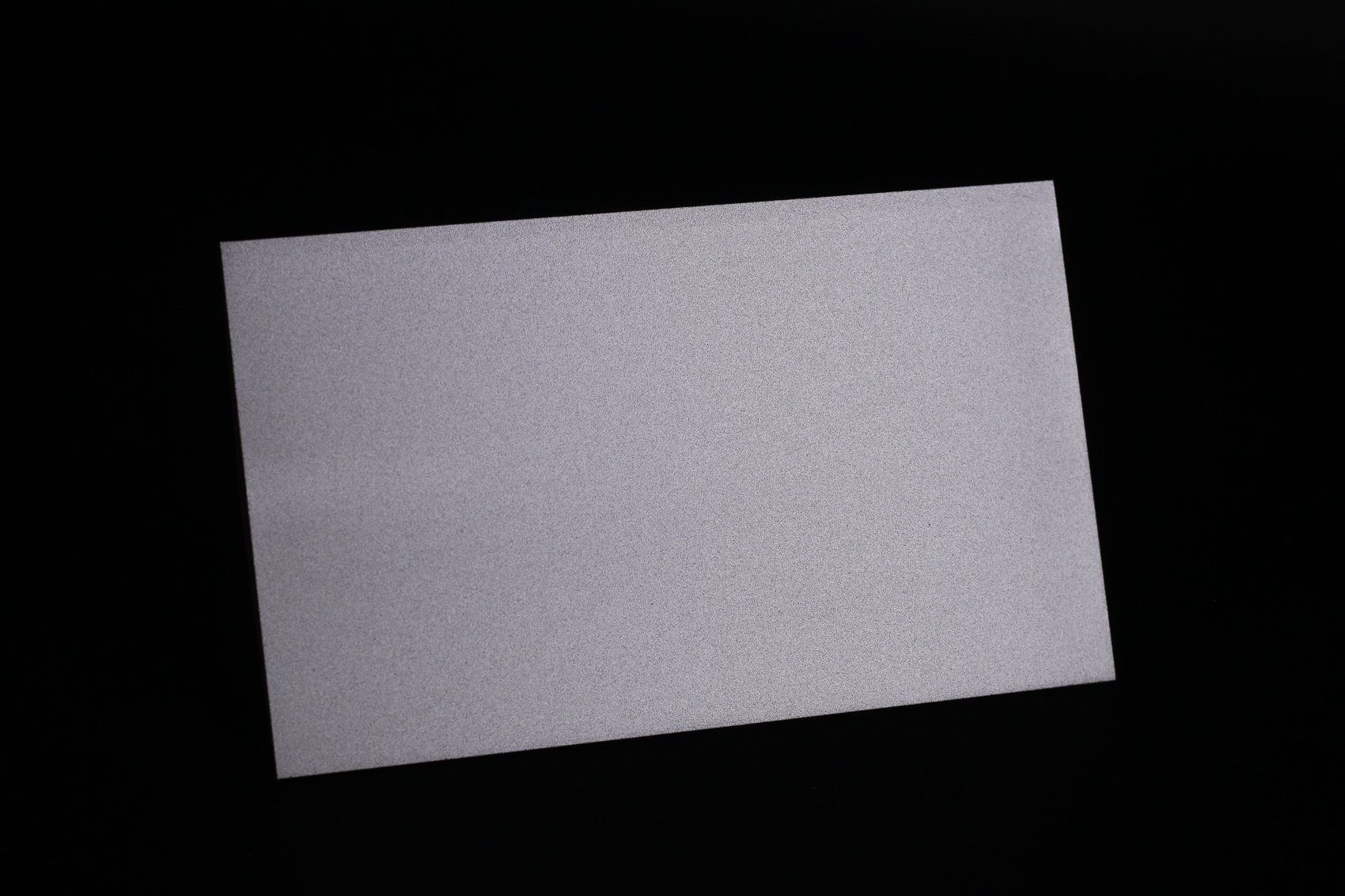
5-inch HD Touch Screen
One of the most attractive features of this printer is the 5-inch HD touchscreen. It’s big, bright, and has enough resolution to make it look great. It can easily be compared to a screen used in a mobile phone which is nice.
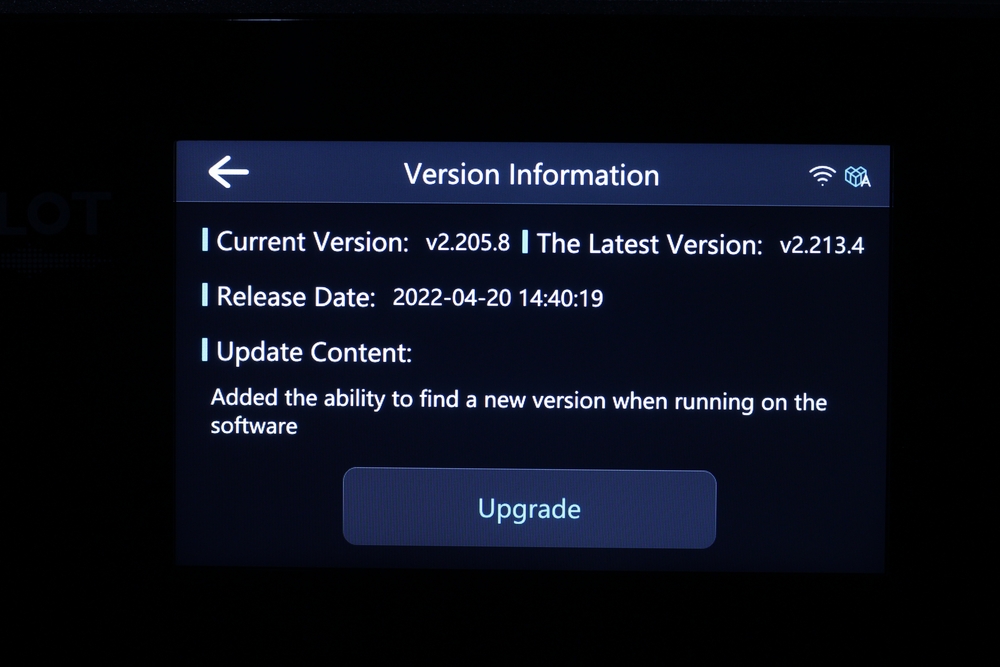
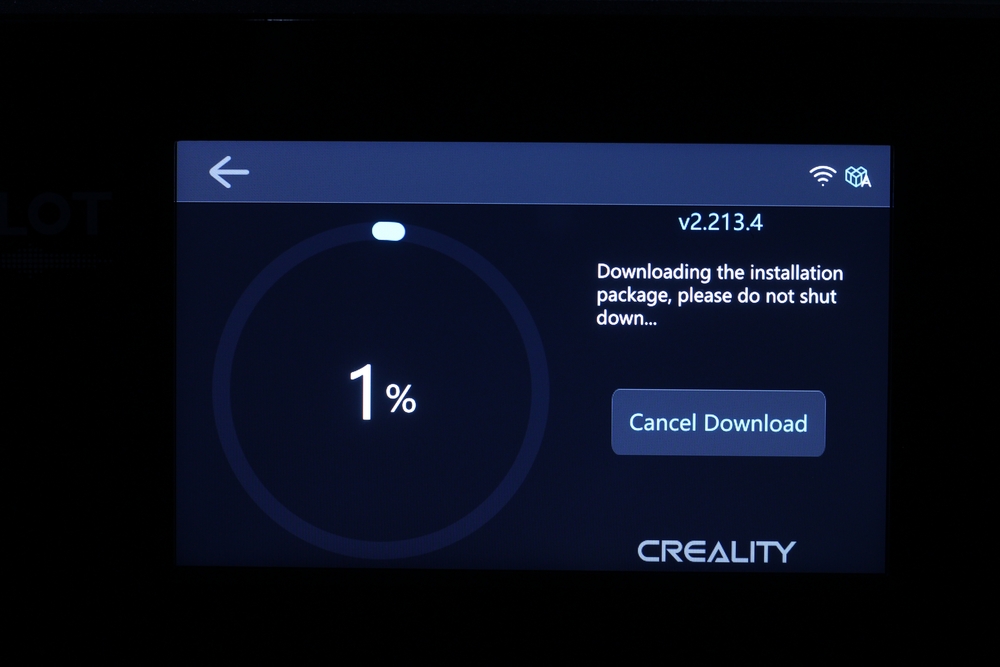
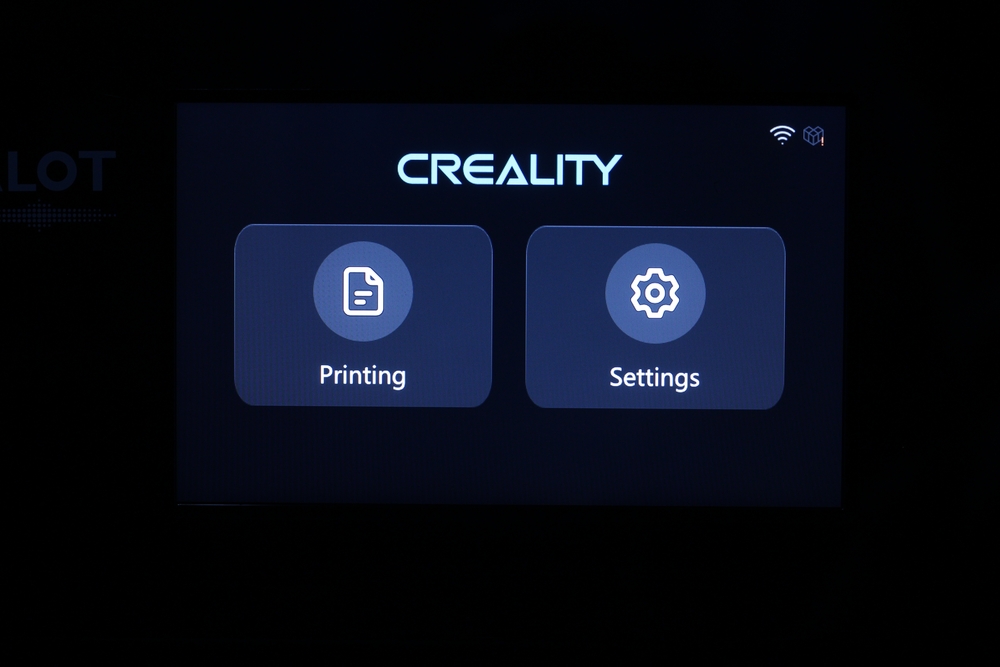
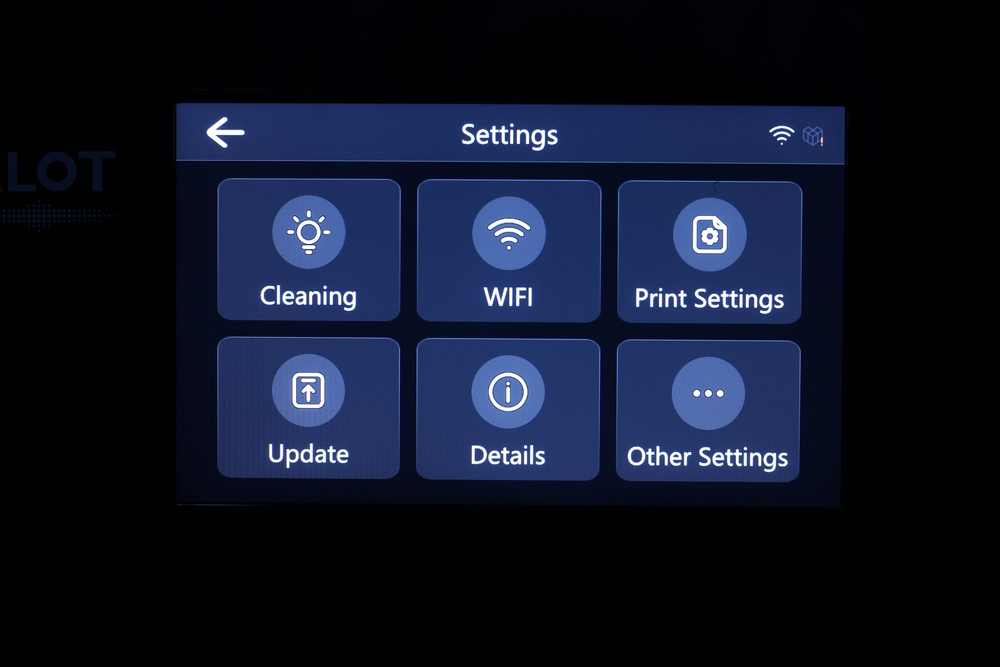

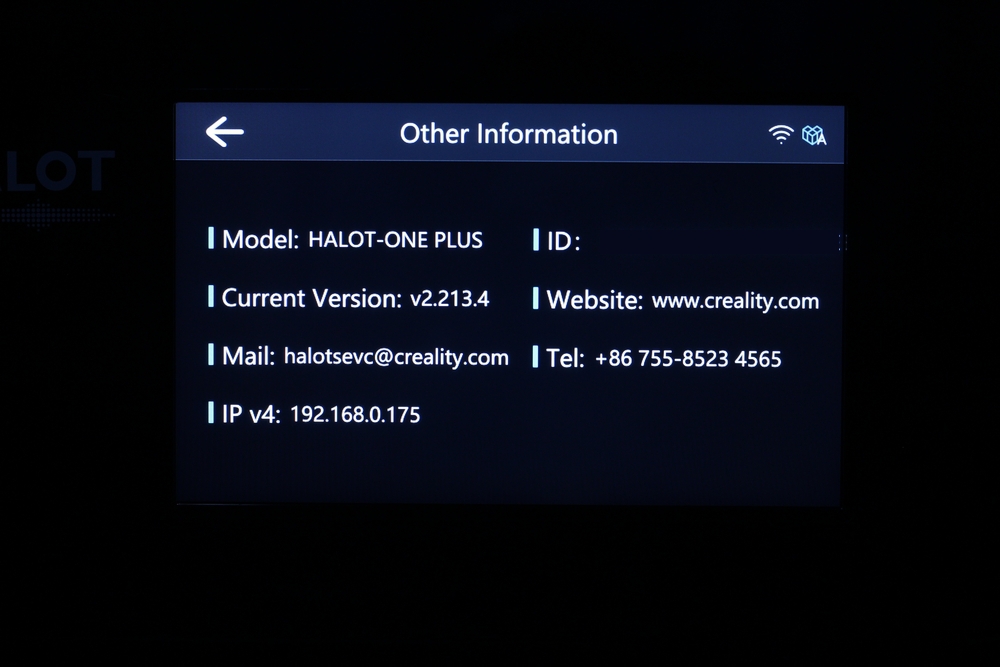
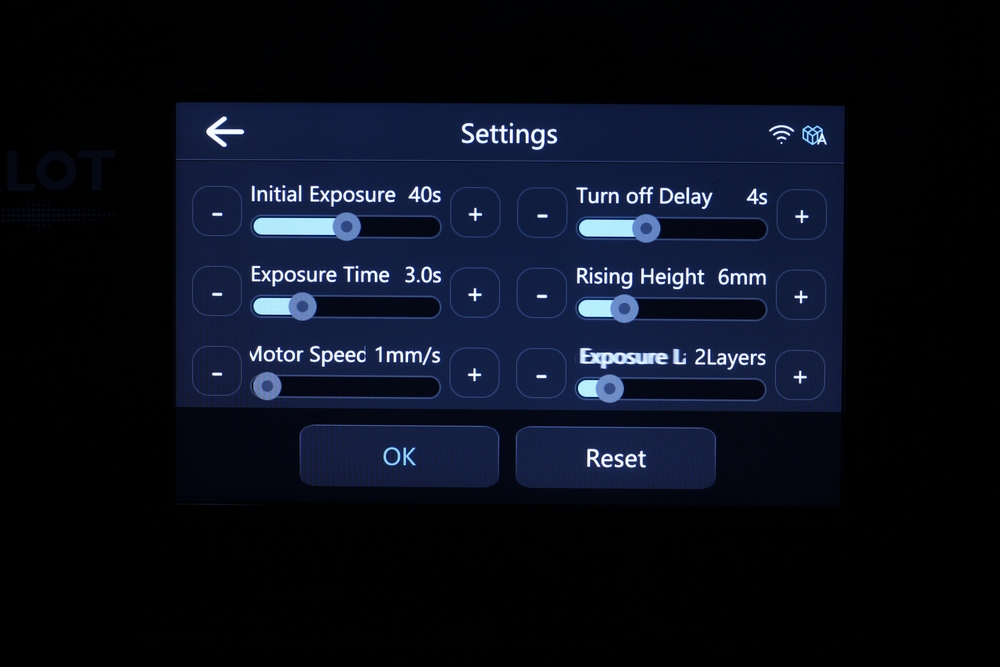


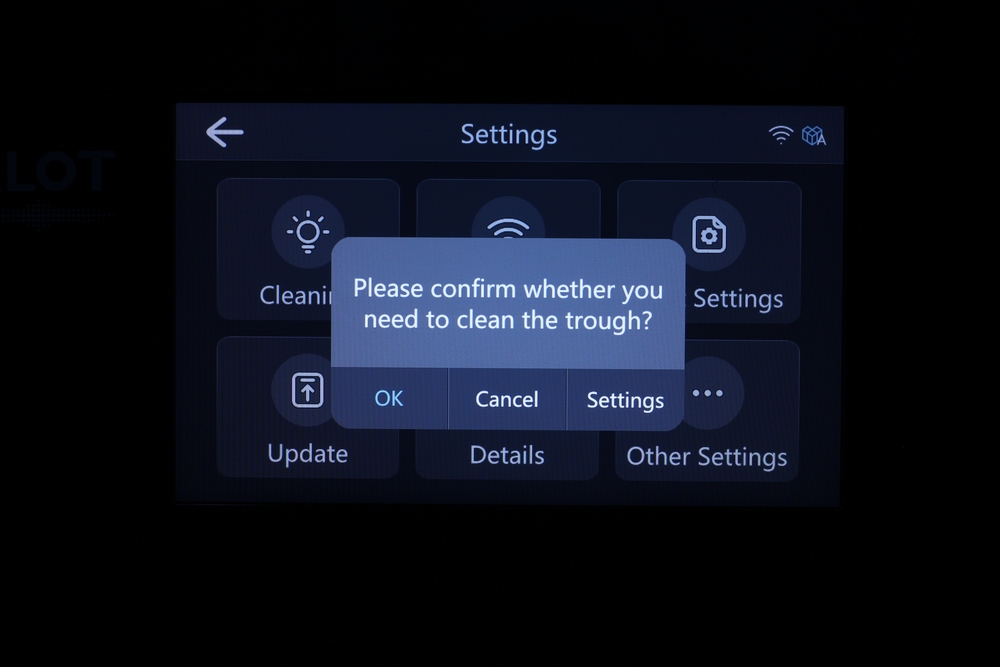
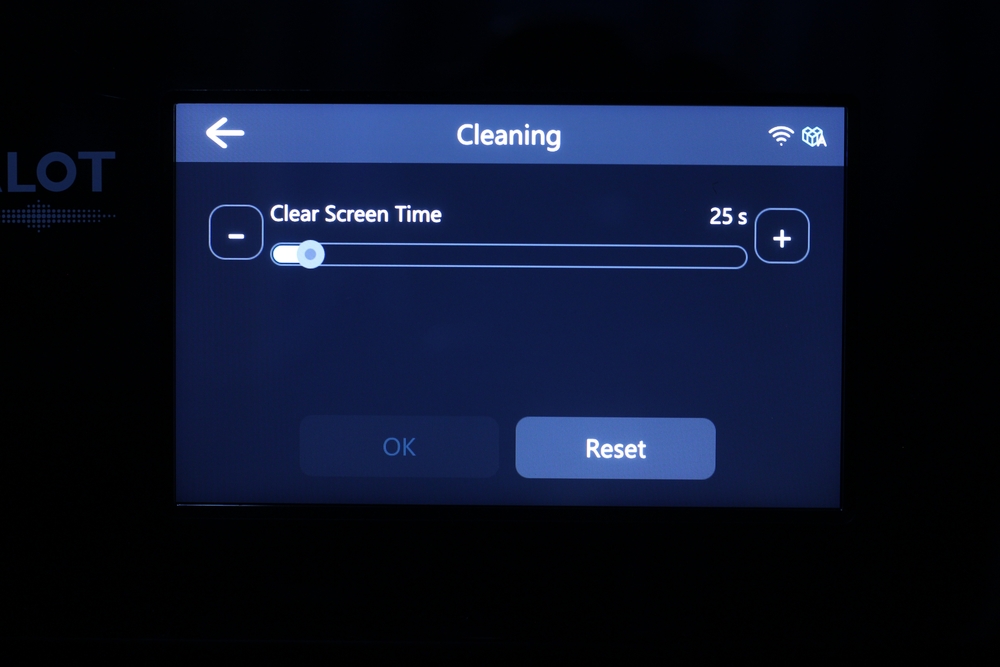

Besides the image quality, the touchscreen is also capacitive meaning that you need to use your fingers to select the options, just like on a smartphone. Other printers use lower-quality resistive screens which are a bit harder to use.
OTA updates are possible, and there’s even the possibility of attaching a webcam to the printer, probably for monitoring the printing process. It’s nice to have this capability, but is it actually useful? The cover is also super dark meaning that webcams will have a hard time “seeing” what’s happening inside.
There are a lot of options available to the user but I am not a huge fan of the added features. Mostly because I don’t really care about the firmware options for a resin printer considering that most of the settings are done in the slicer. A fancy screen only adds extra cost without actually benefiting the print quality. Of course, you might like this. If you do, rest assured that the firmware functionality is much better compared to what Creality delivered in the past.
When using the printer, there’s the option of slicing your own files and printing from the USB drive, or connecting the printer to Wi-Fi and downloading pre-sliced models directly from Creality Cloud.
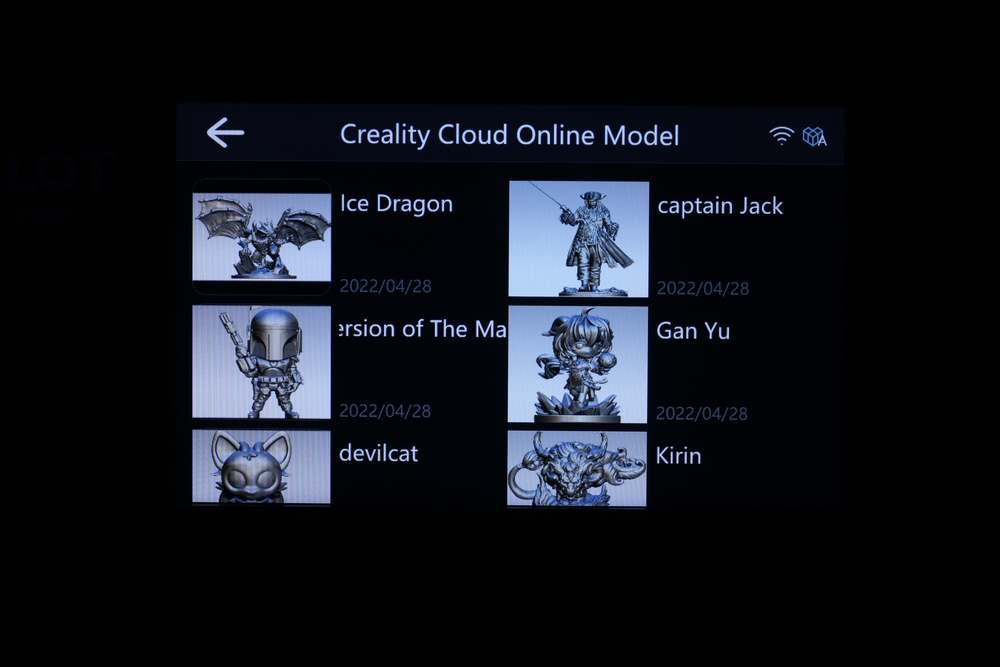
While this feature sounds interesting, the Creality Cloud platform has a high amount of stolen models from various artists, and the Creality Cloud team doesn’t seem to do a good job of removing them. First I thought it was the lack of understanding about how the platform should work, but it seems that they don’t really mind this and are not in a hurry to solve the problem.
I don’t support this kind of intellectual propriety theft so I won’t cover this feature. I even contacted the Creality Cloud team for clarification but they haven’t replied to my email.
Power consumption
Idle power draw is around 8W. When the printer has the LEDs on to cure the resin layers, power consumption is about 60W.
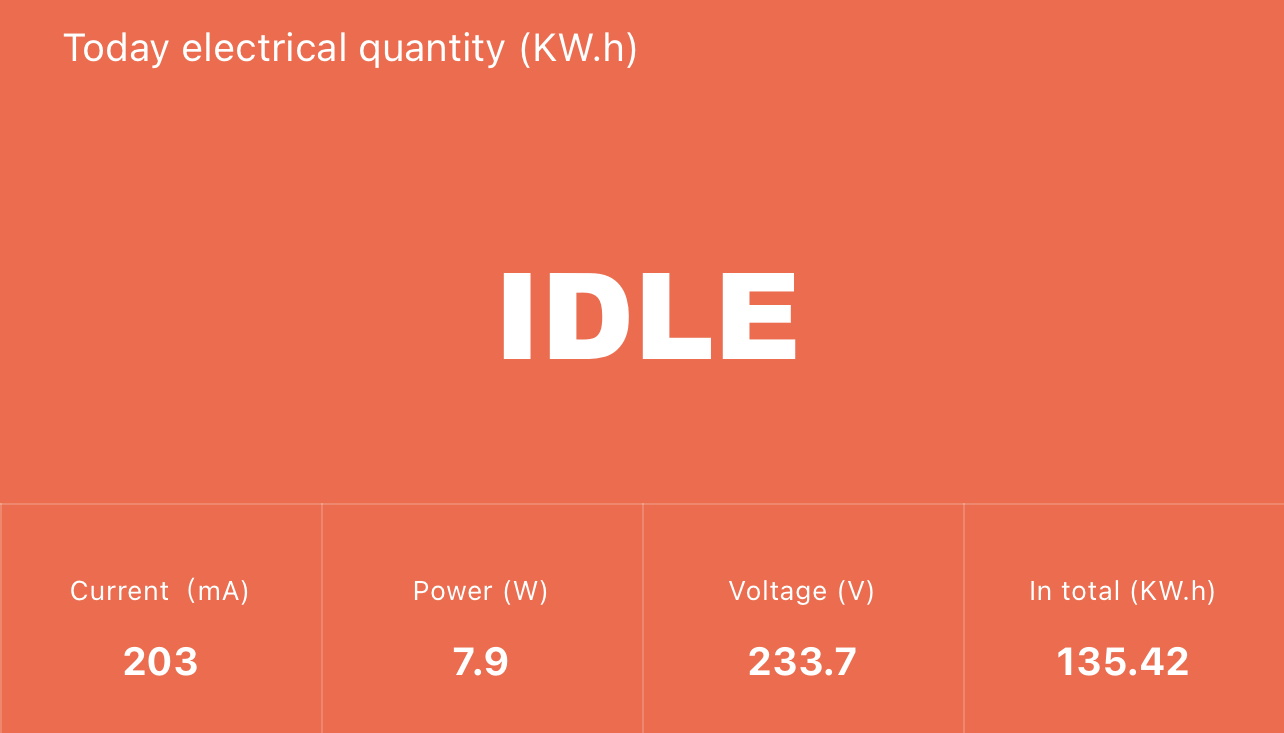

All these measurements were taken with a Blitzwolf smart power socket which indicates the power draw, and it can also be used for remotely powering on and off the printer.
Creality Halot One Plus Noise Levels
As I mentioned before, the UV LED needs an active fan to keep it cool which is noisy. Paired with the fan which pulls air through the activated charcoal filter, they make the Halot One Plus quite a noisy machine compared to its main competitor, the Anycubic Photon M3.
Test prints on Creality Halot One Plus
Kholek Suneater
I started my testing with the Kholek Suneater model which was pre-sliced on the USB drive included with the printer. Even though the model was full of supports, the result is quite good.
The water washable resin from Creality is quite flexible before curing, but it doesn’t wash away only with water. After it cures, it becomes brittle which is also the reason why the hammer is broken.


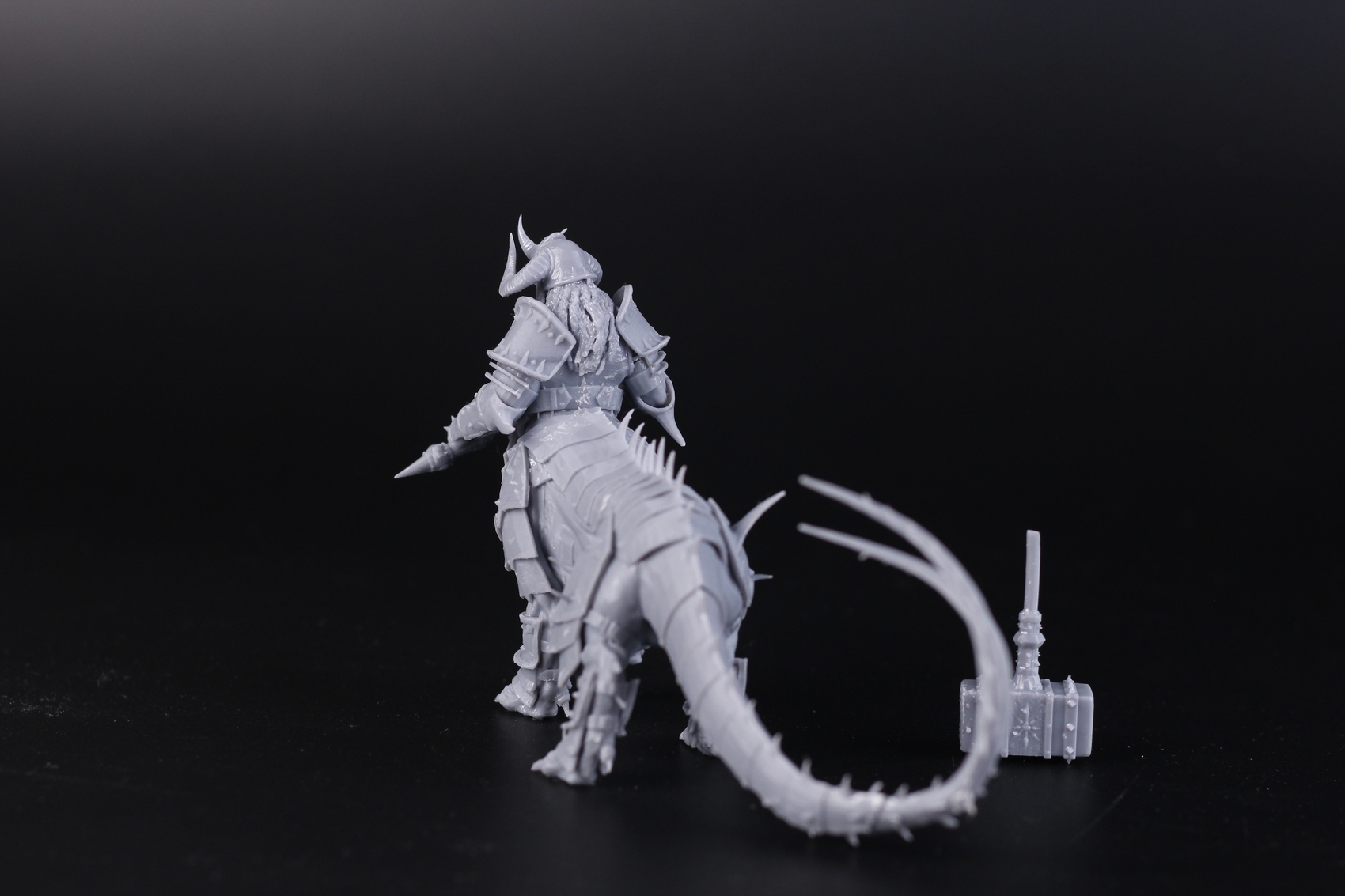
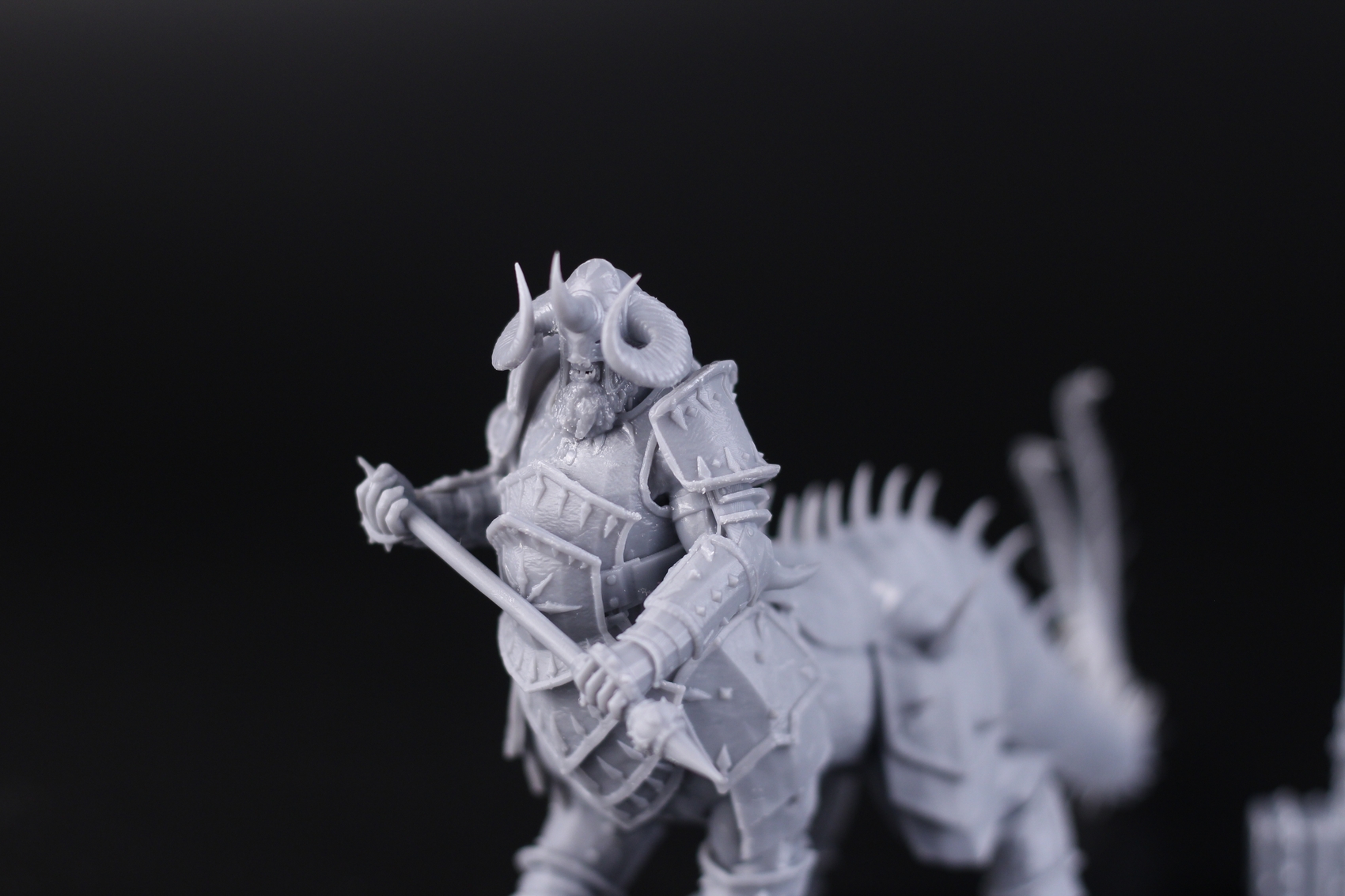
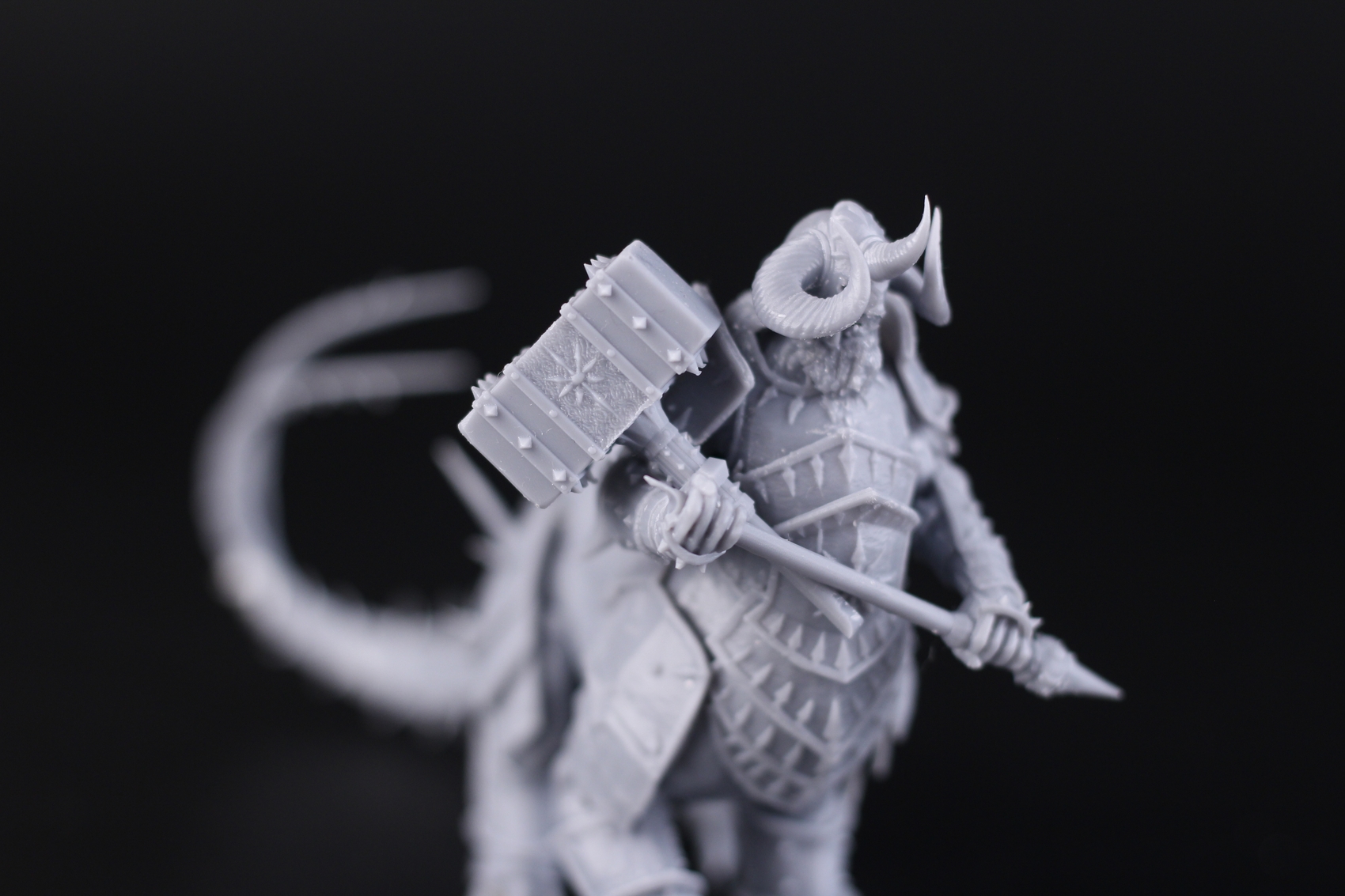
- Material: Creality Water Washable Grey
- Layer Height: 0.05mm
- Layer Cure Time: 3s
Gul’dan
I switched resins and printed this awesome Gul’dan bust from Fotis Mint which I also printed on the Anycubic Photon M3 Max. That way, you can compare the print quality between the printers.
Honestly, I can’t see much difference between the prints. Both machines were able to reproduce the model accurately with excellent details, so I’m happy with the results.

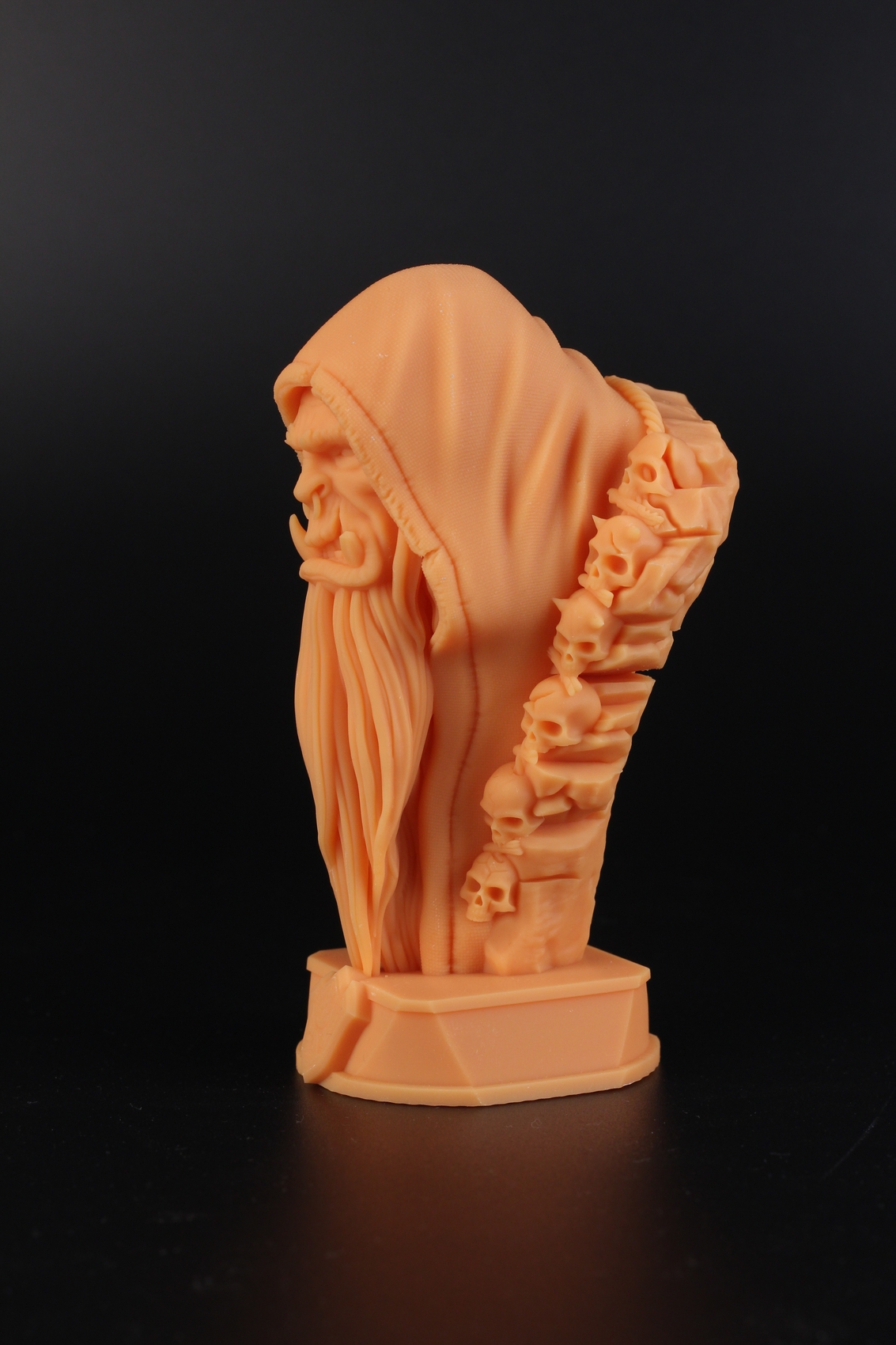
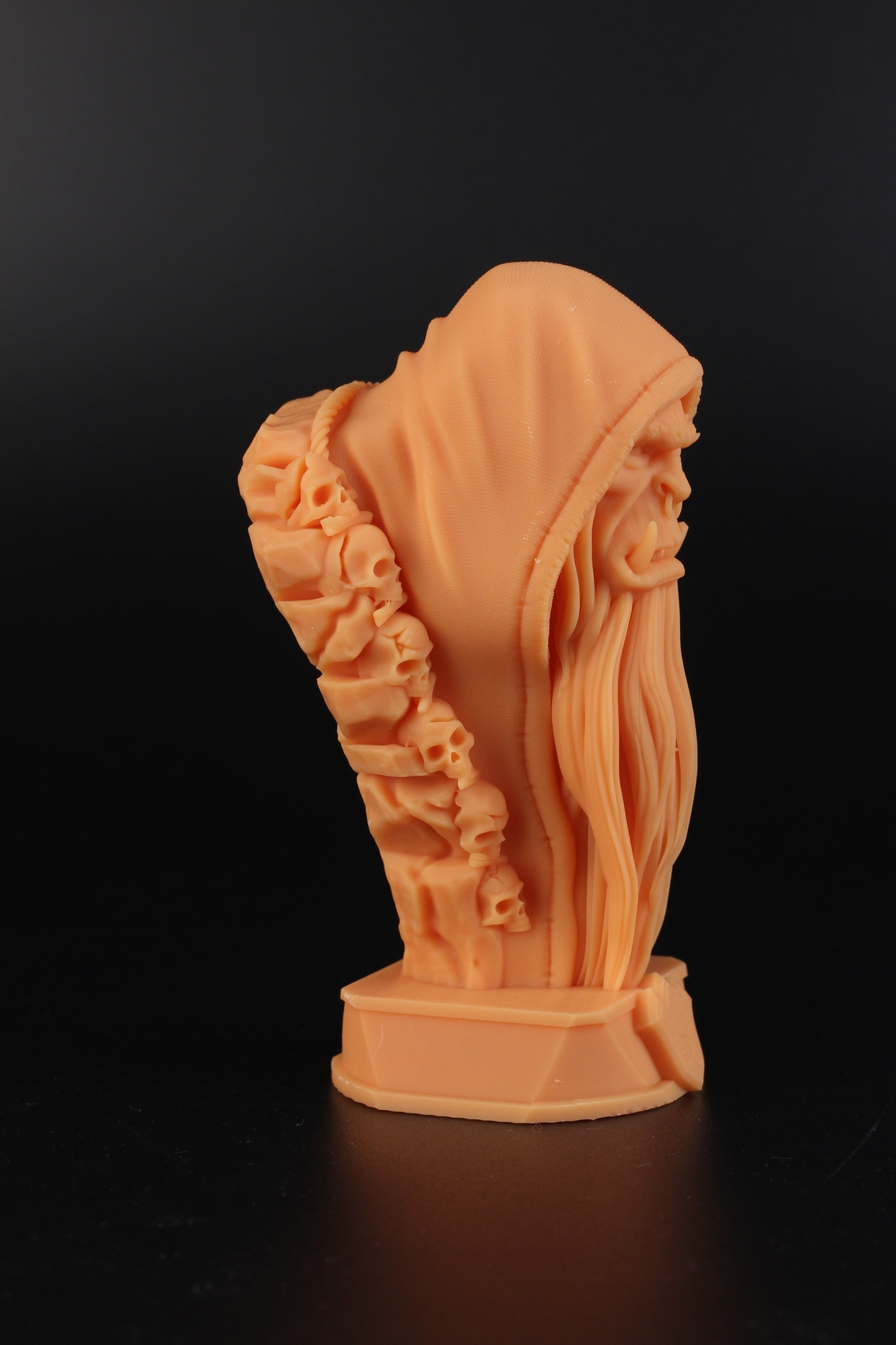
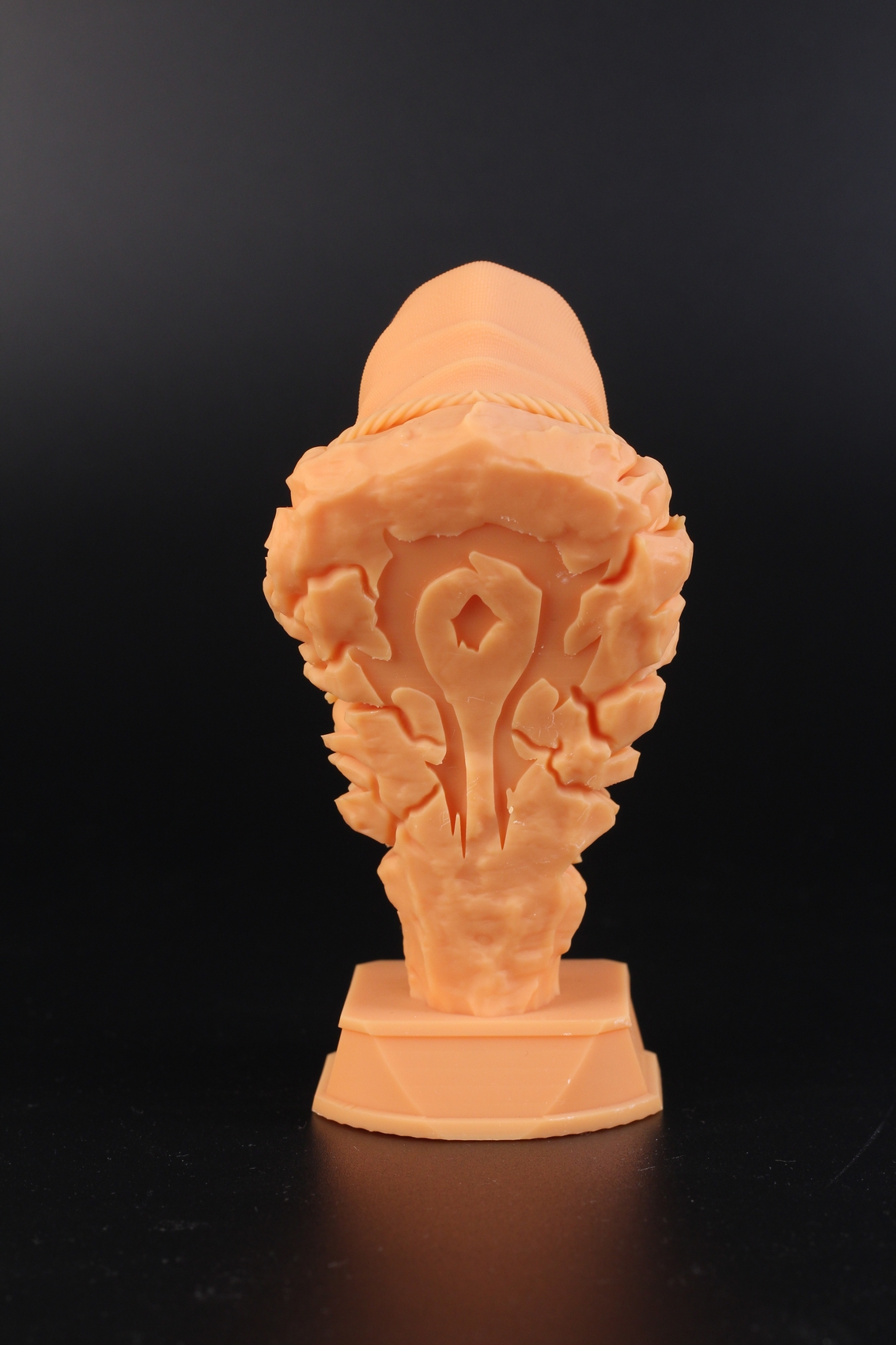
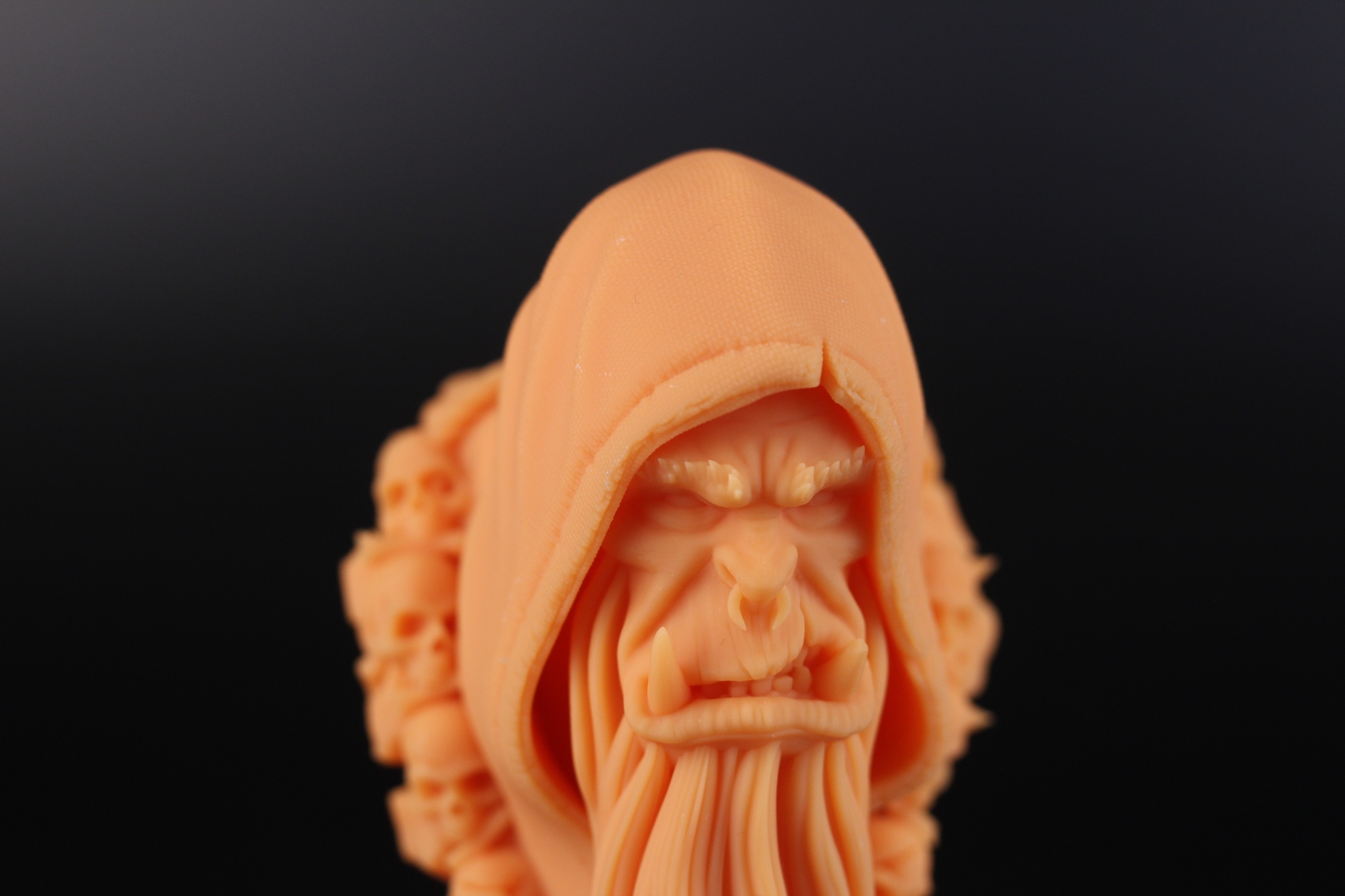
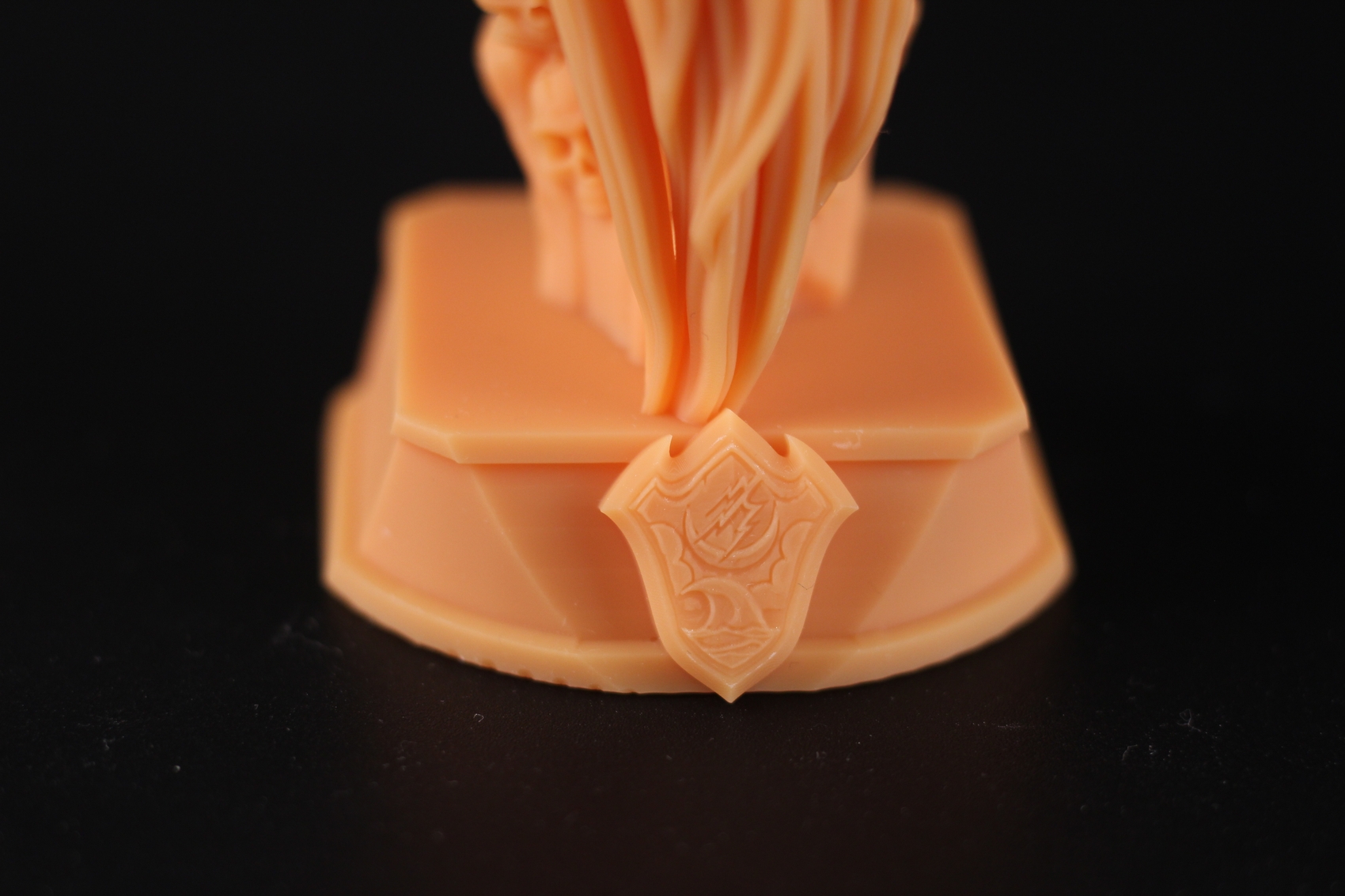
- Material: Anycubic Craftsman Apricot
- Layer Height: 0.05mm
- Layer Cure Time: 2.7s
Miles Morales
There were some issues with the Miles Morales bust, but mostly because of the curing time I used for it. When the supports were removed, some of the base sections chipped away. That’s an issue that has to do with my slicing, and not the printer.
Otherwise, there’s really not much to say about this. Excellent print quality, with good reproduction of the features which is something we kind of take for granted with almost any resin printer.
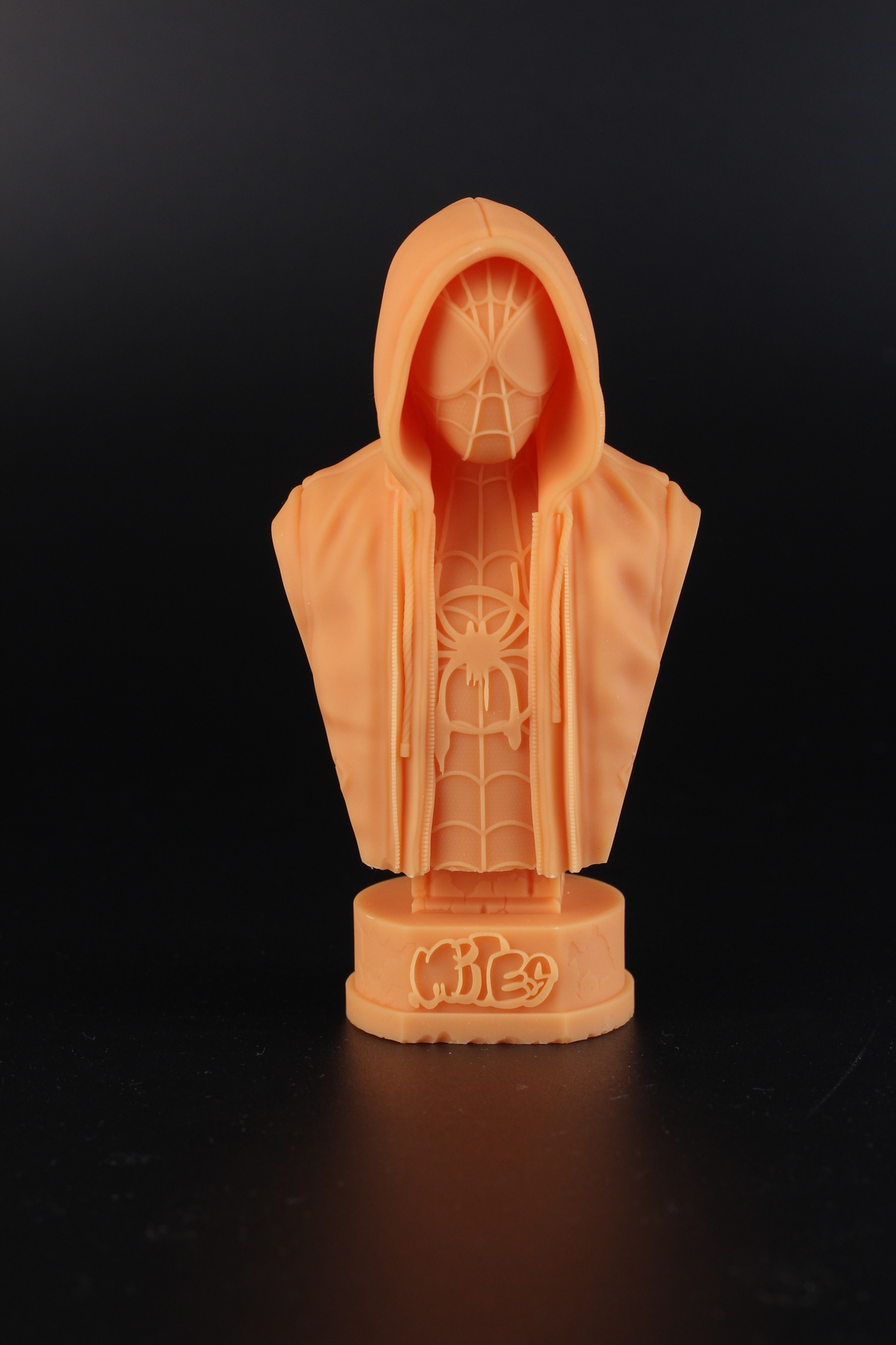
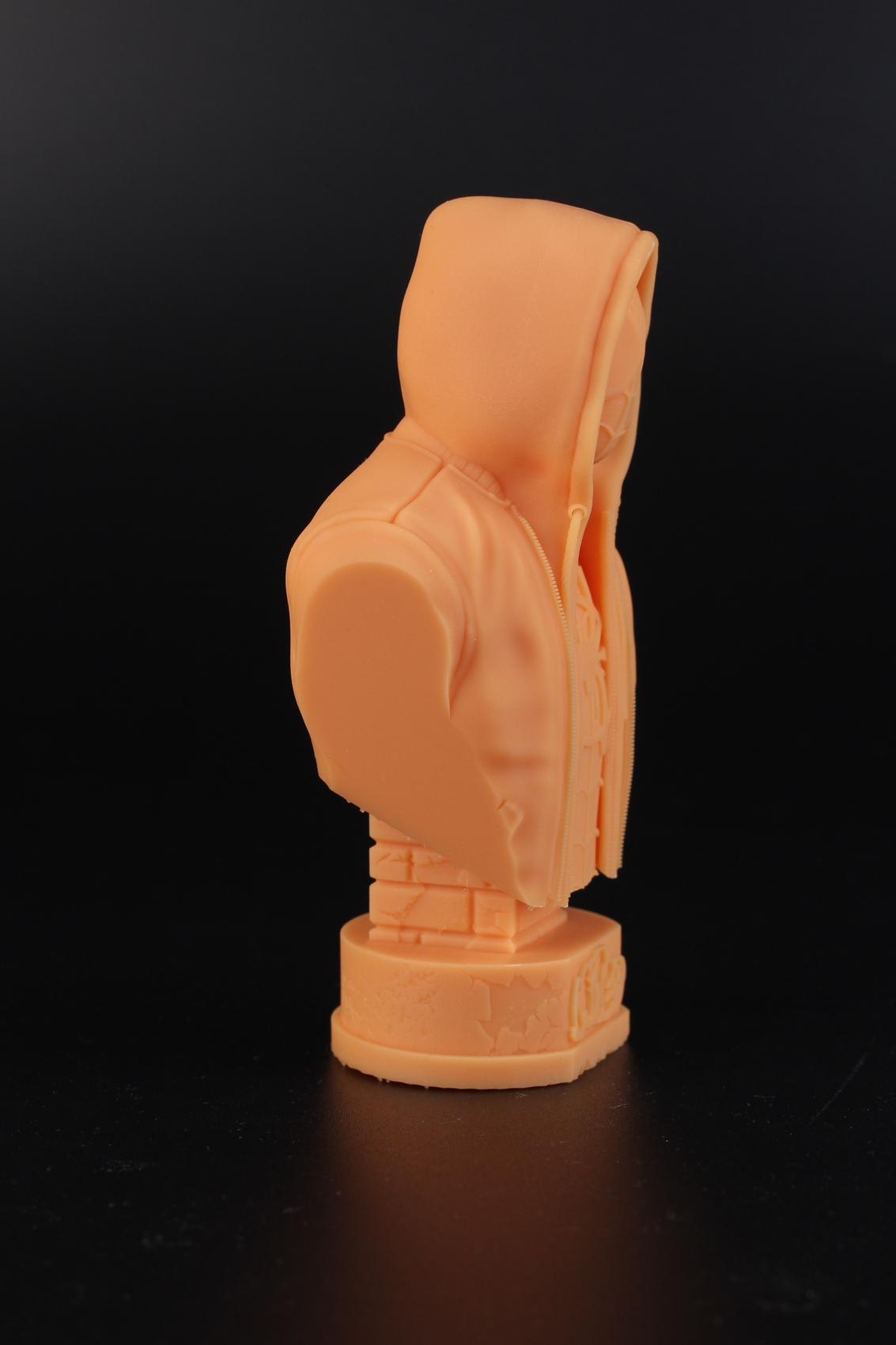
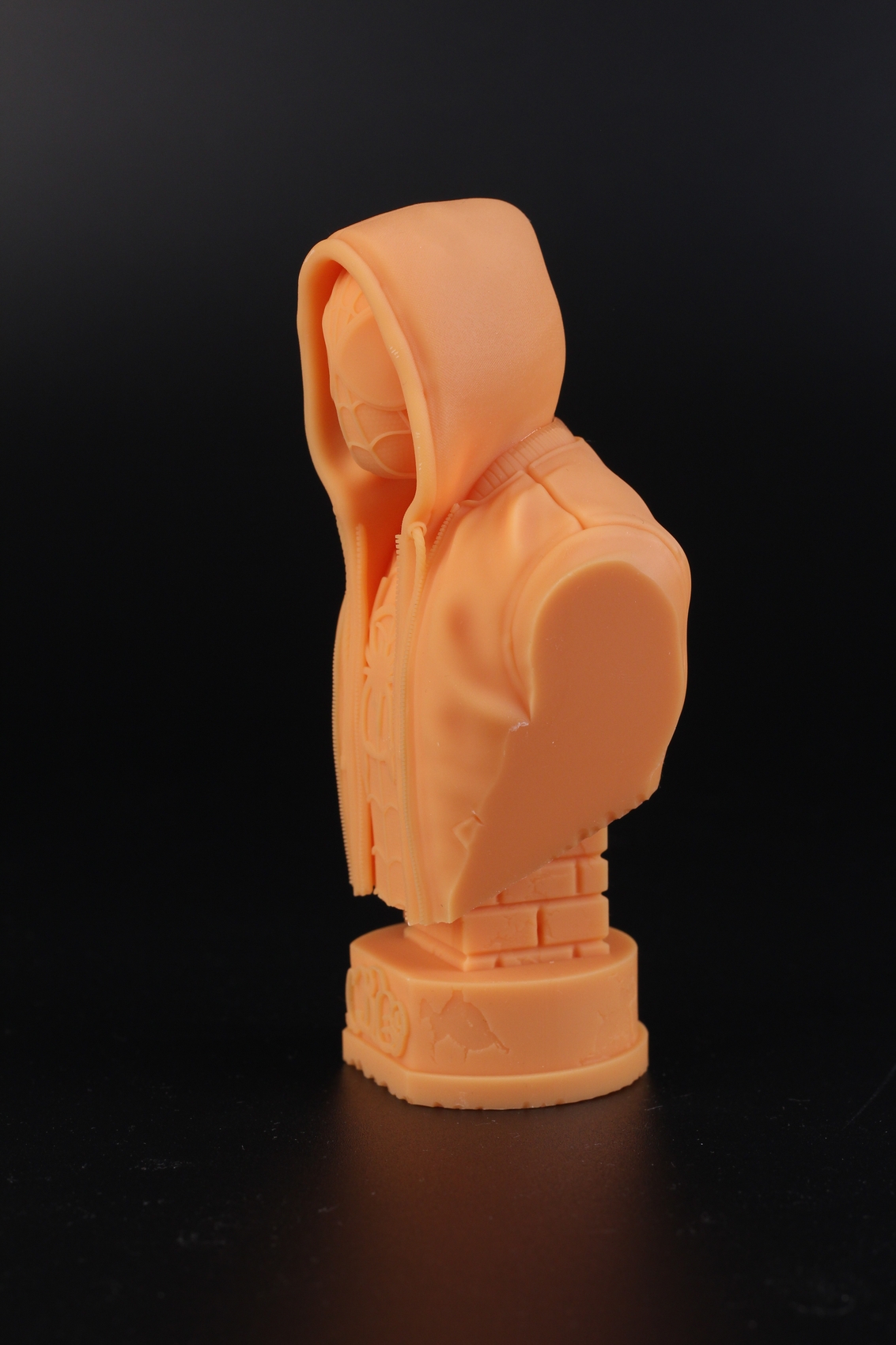

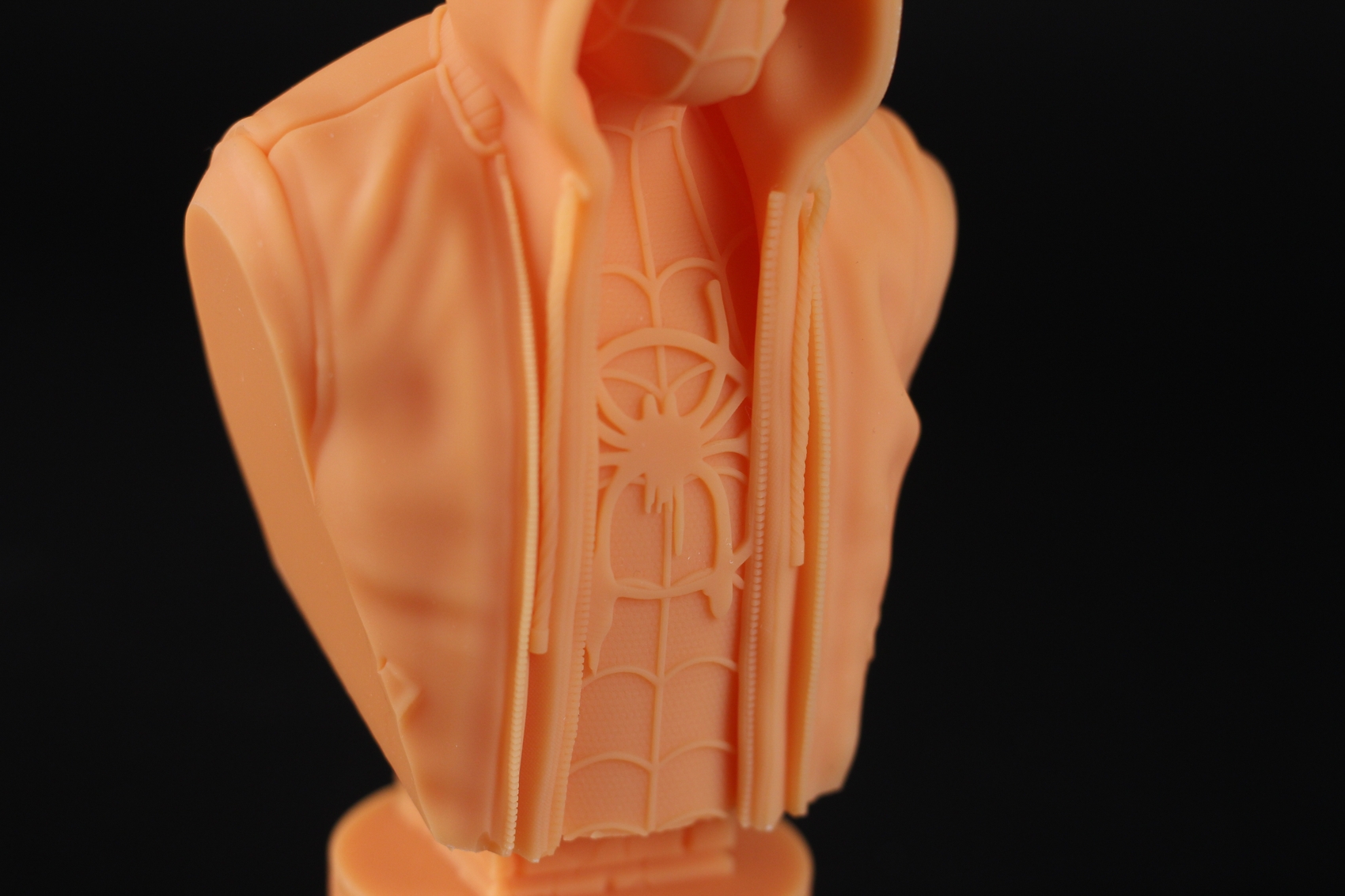

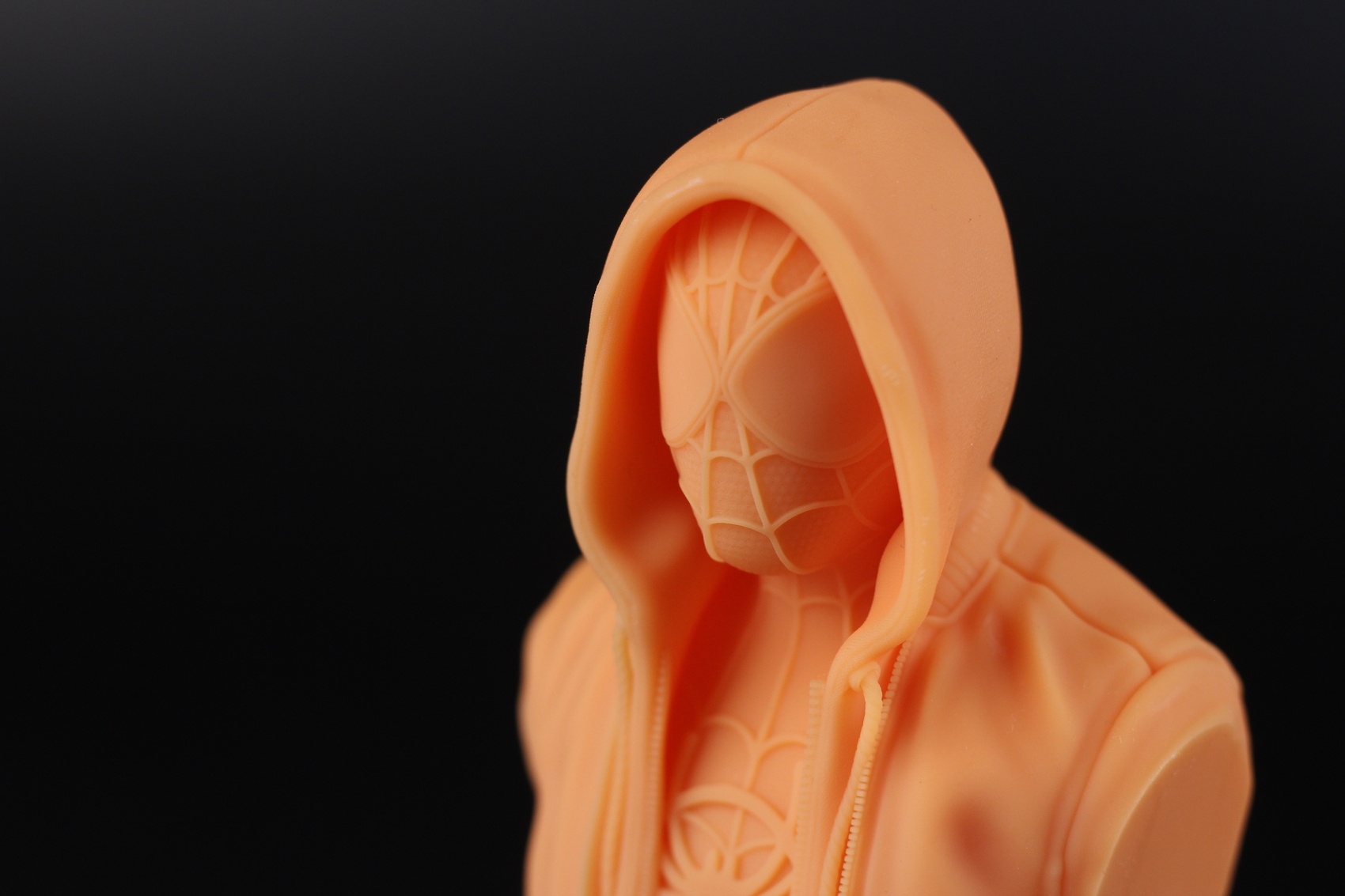
- Material: Anycubic Craftsman Apricot
- Layer Height: 0.05mm
- Layer Cure Time: 3s
Articulated Dragon
Finally, I printed the super-popular Articulated Dragon model from mcgybeer to test the adhesion with less curing time while dialing in the resin exposure settings. I printed two of them, and both came out great.
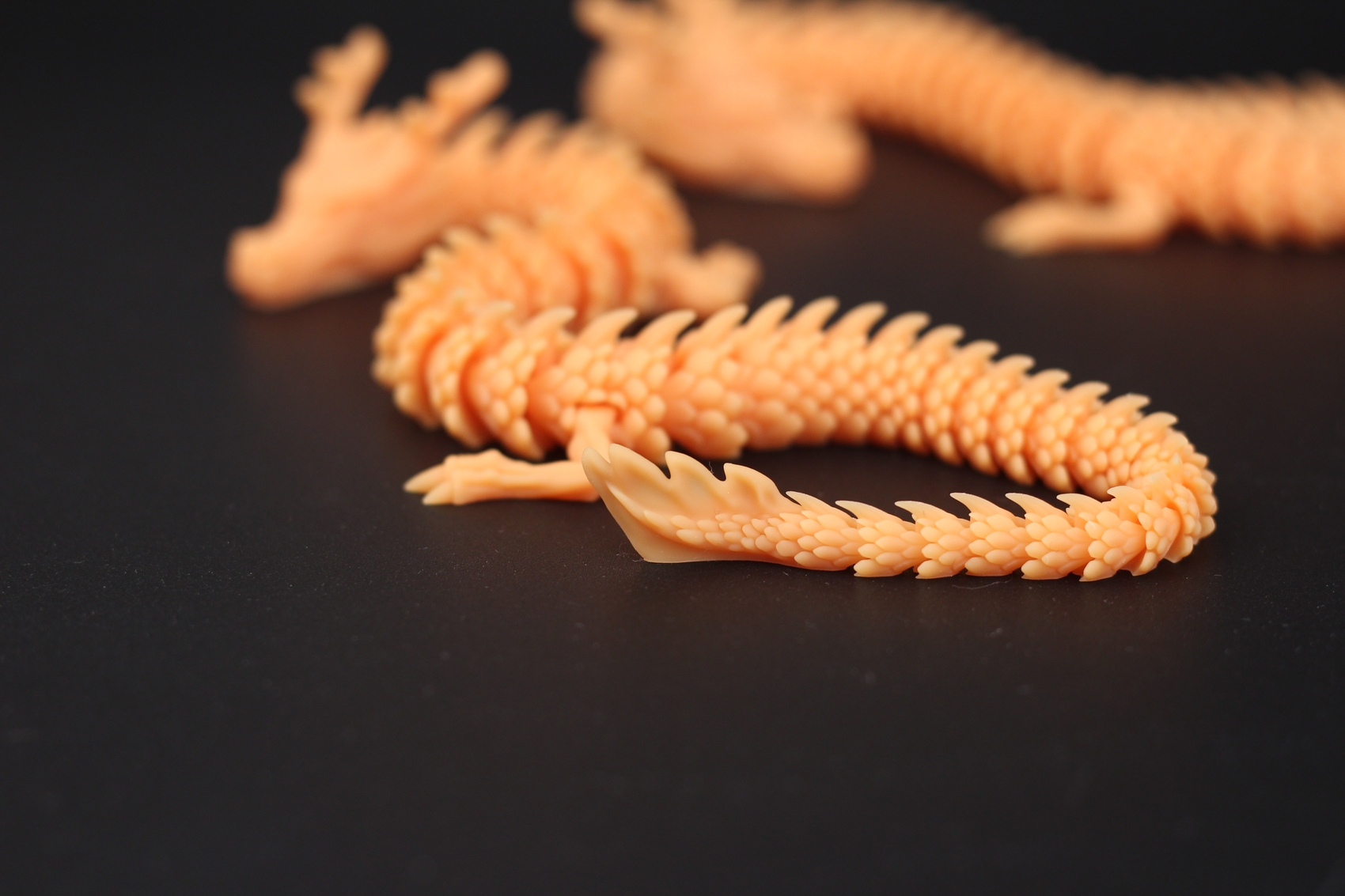

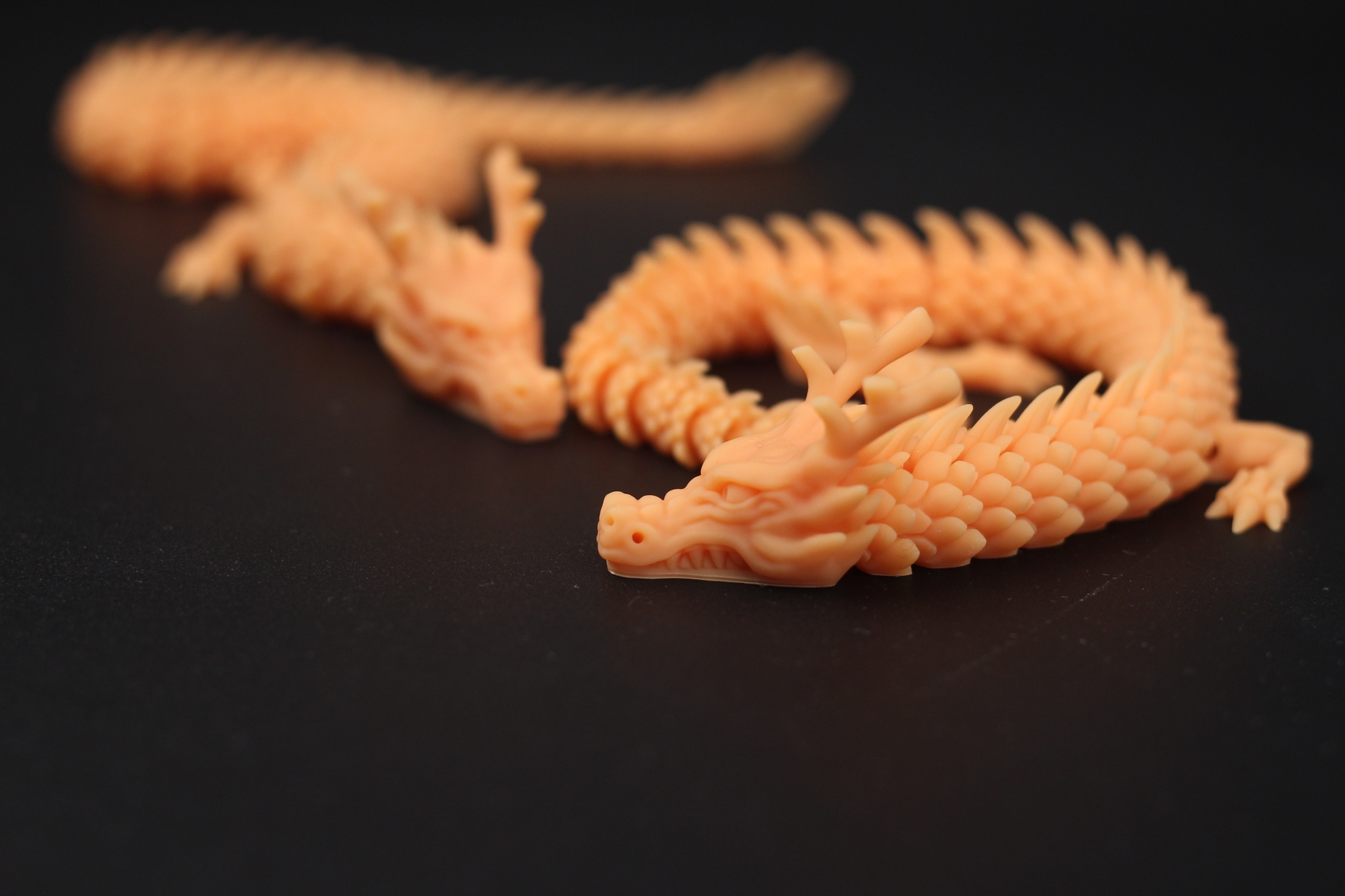
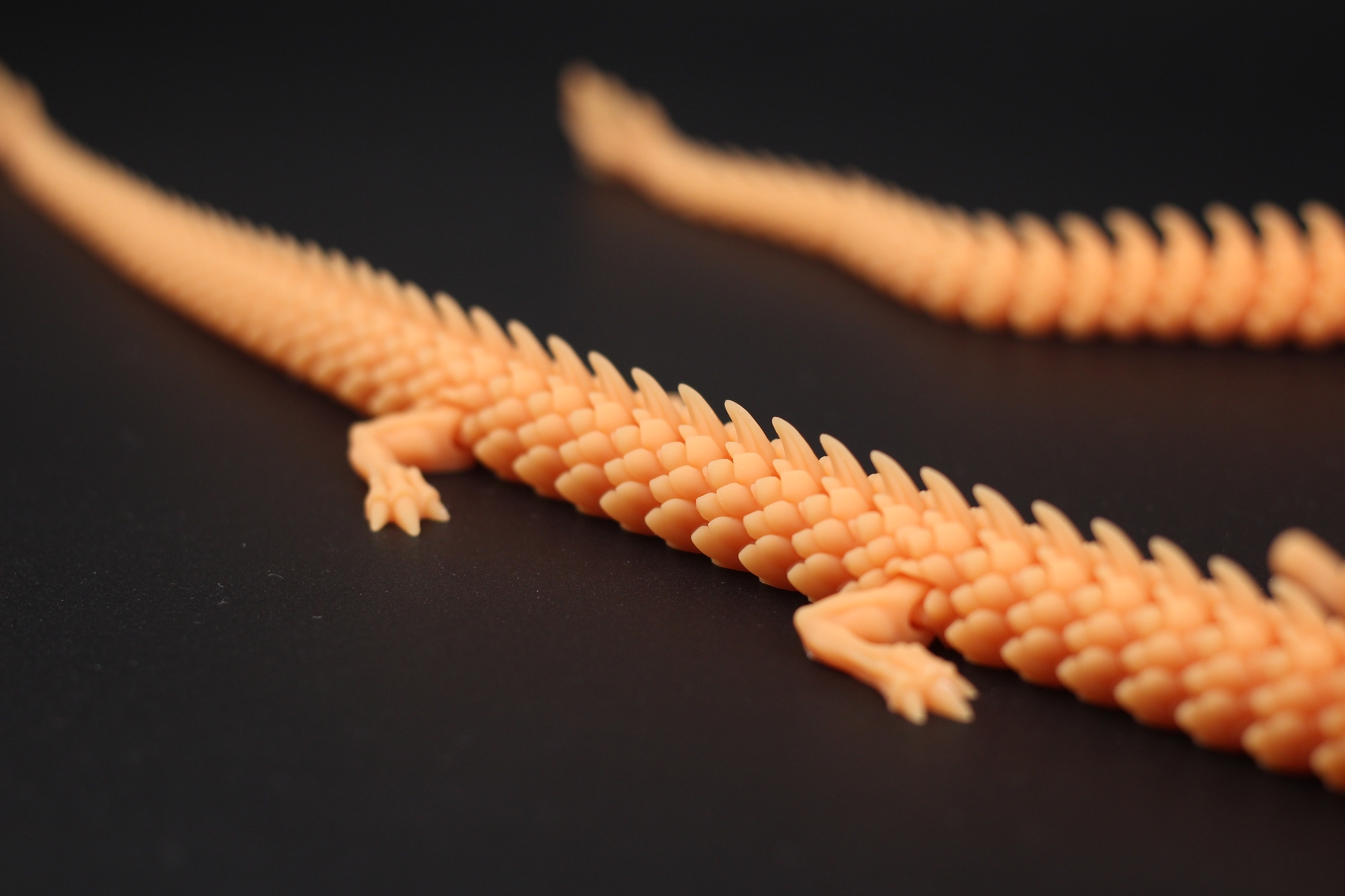
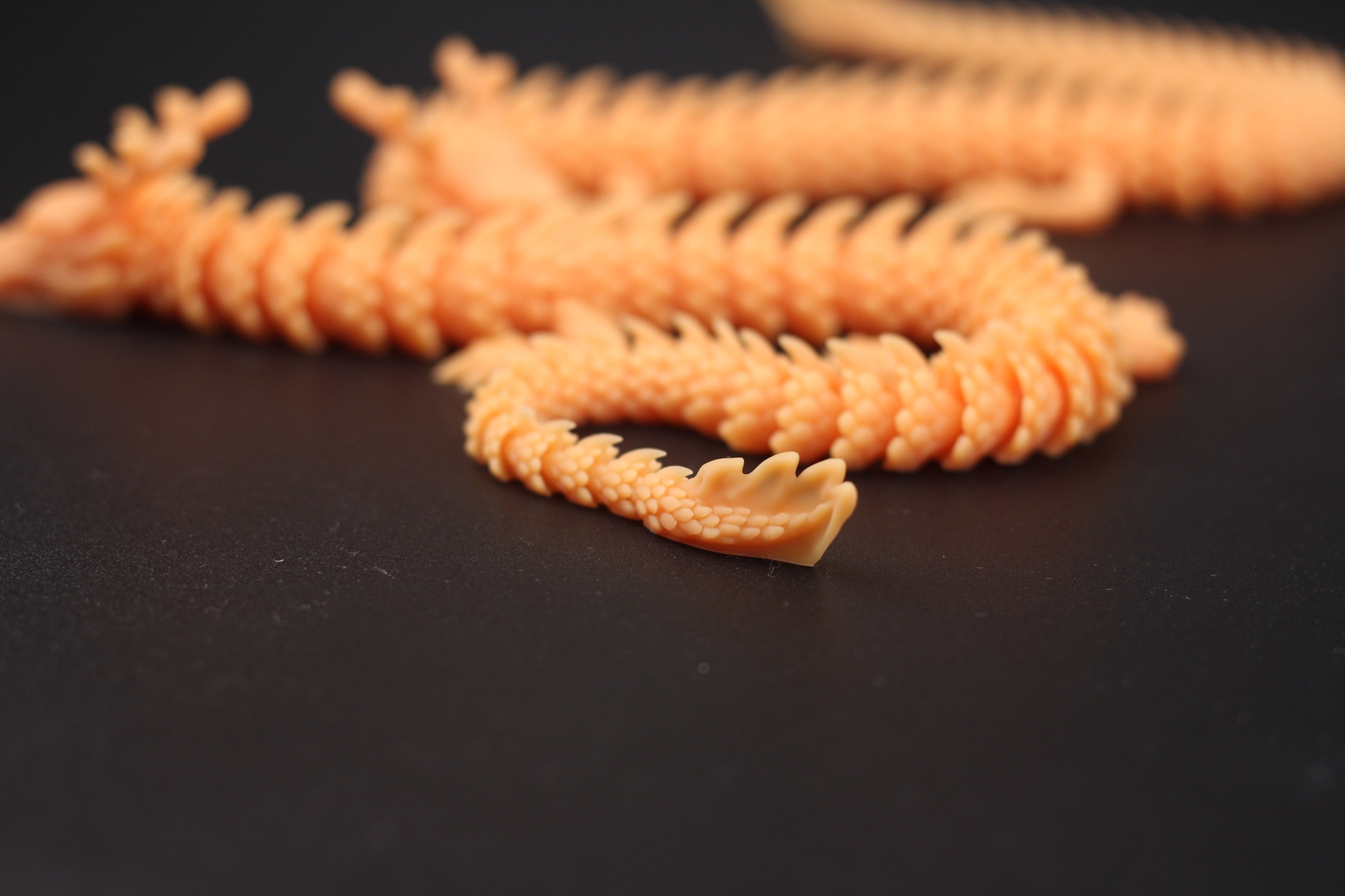
- Material: Anycubic Craftsman Apricot
- Layer Height: 0.05mm
- Layer Cure Time: 2.3s
Conclusions: Is the Creality Halot One Plus worth it?
The Creality Halot One Plus is a decent resin printer, which performs well during operation. It’s capable of producing quality prints with detailed surface quality without too much work.
I had no problems with it during the testing period and I think it is worth getting if you like how it looks and don’t mind the fan noise during operation.
I would like it better for a price closer to 350 USD. Right now, it’s priced at ~475 USD on some websites which is too much in my opinion and doesn’t make the printer as attractive. You could get a larger format 3D printer for this kind of money.
One of the main selling features of the Halot One Plus is the large touchscreen with the smart capabilities I covered which is nice, but not worth the increased price tag of the printer. If you don’t need that, I recommend checking out the Anycubic Photon M3 too, which is priced under 300$. It provides the same print quality while being cheaper and more silent.
Creality Halot One Plus Rating
Design
Specs
Noise Levels
Ease of use
Print Quality
Price
The Creality Halot One Plus is a good resin printer with great print quality, but the price is not very competitive and this makes it a harder purchase compared to other alternatives on the market.
Where to buy the Creality Halot One Plus?
The Creality Halot One Plus can be purchased from the following websites:
AliExpress
Amazon
Creality3DOfficial
Creality
I recommend checking out the Discount Codes page before purchasing. I regularly update the article with discount codes for various online shops, and you might find one for this particular model.
The Creality Halot One Plus was provided free of charge by Creality3DOfficial for the purpose of this review. While the article includes affiliate links, all opinions are my own. Nobody reviewed the article before it was posted, following the Review Guidelines.
Liked it?
|
|


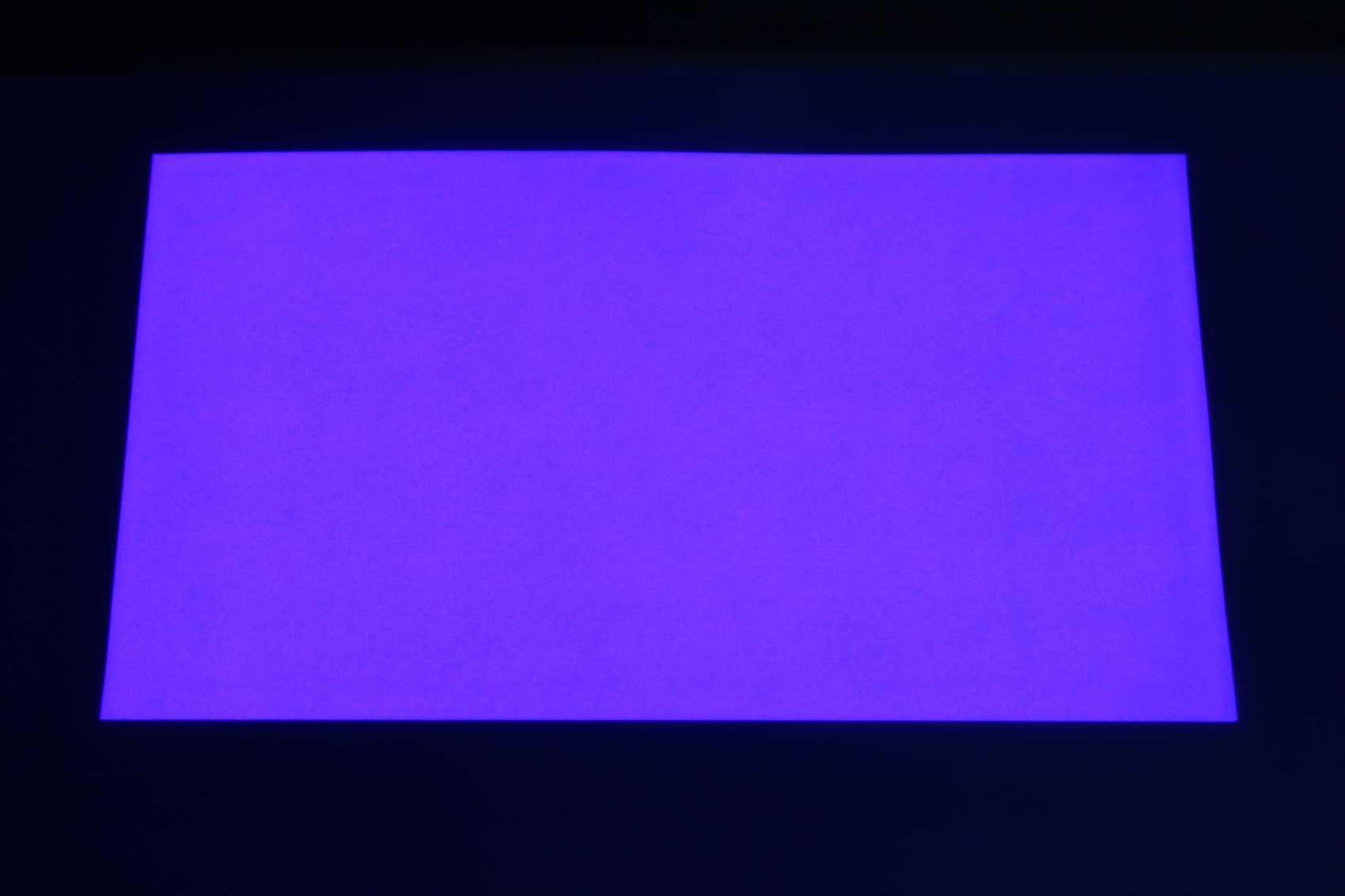

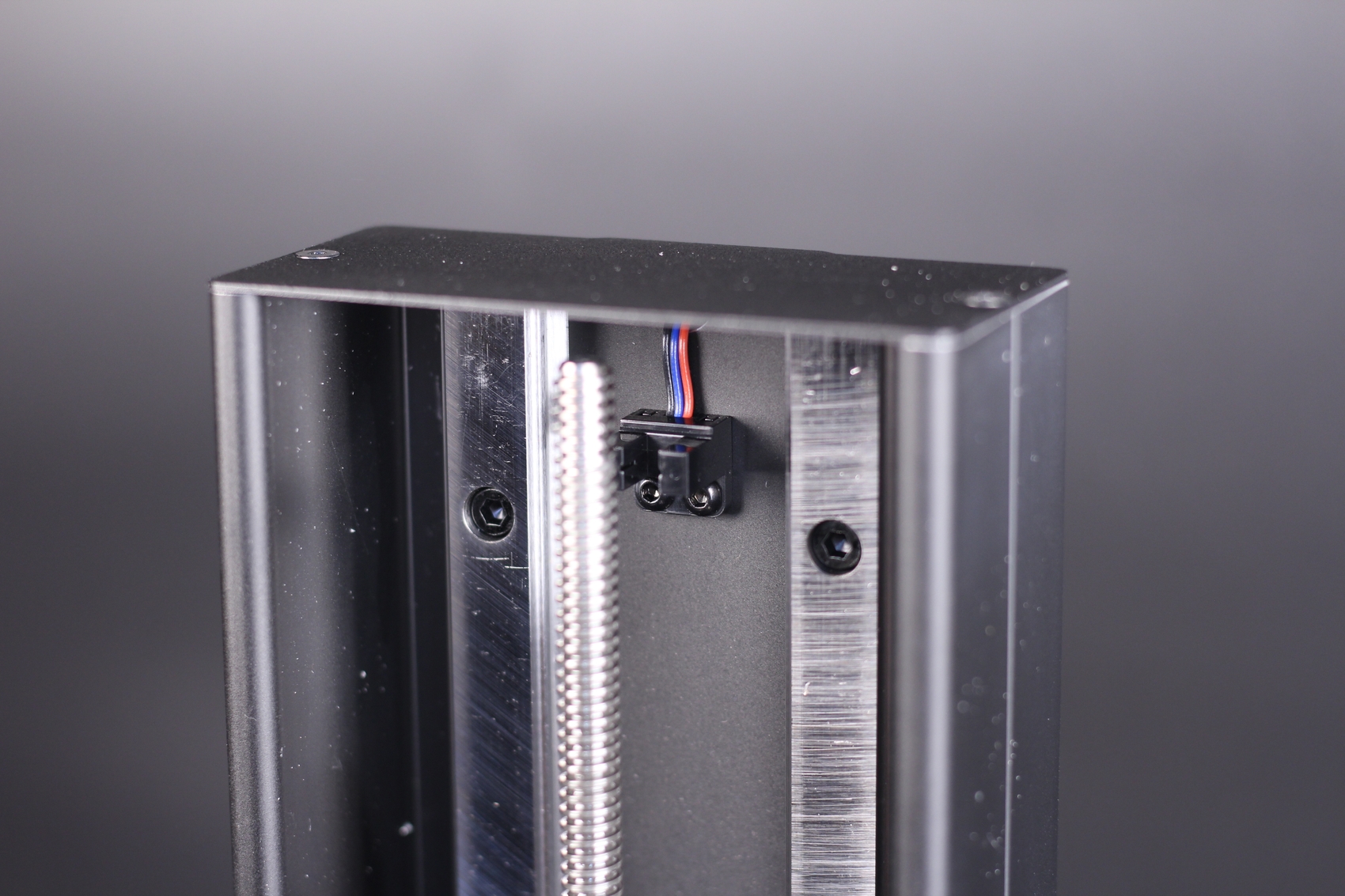

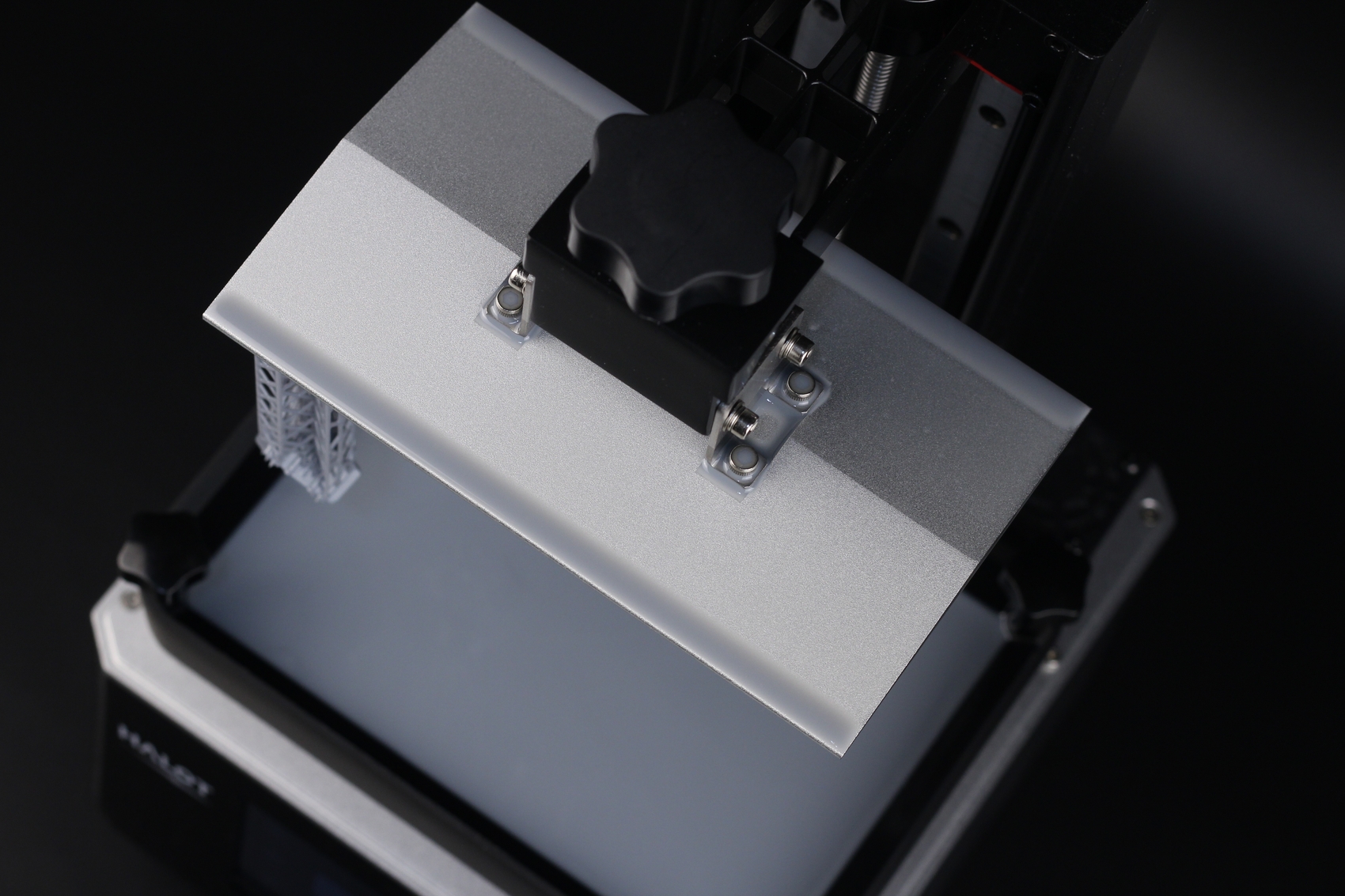
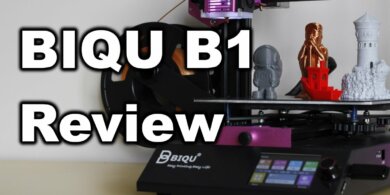
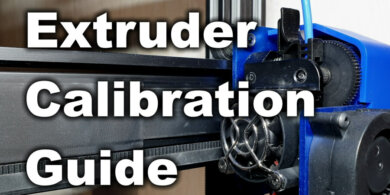
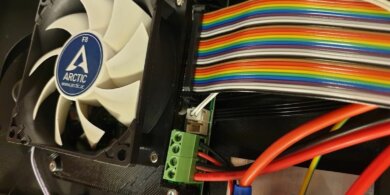
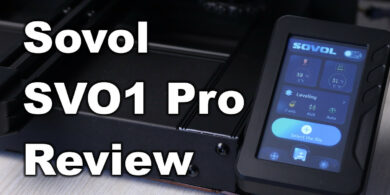
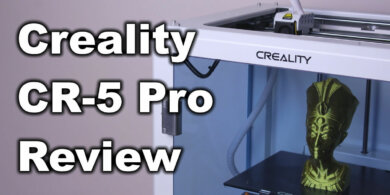
You can leave a comment for this article on the 3DPrintBeginner Forum